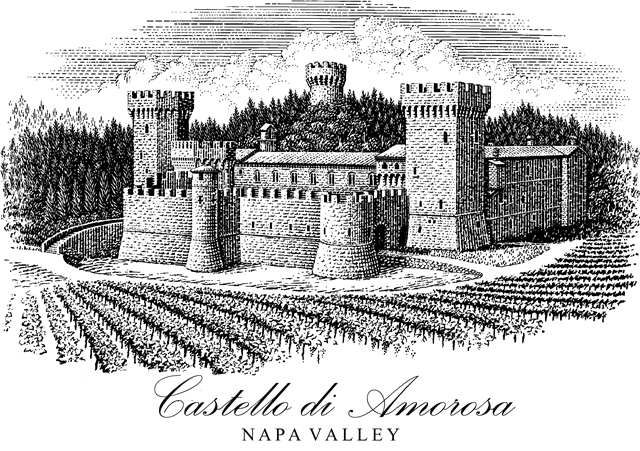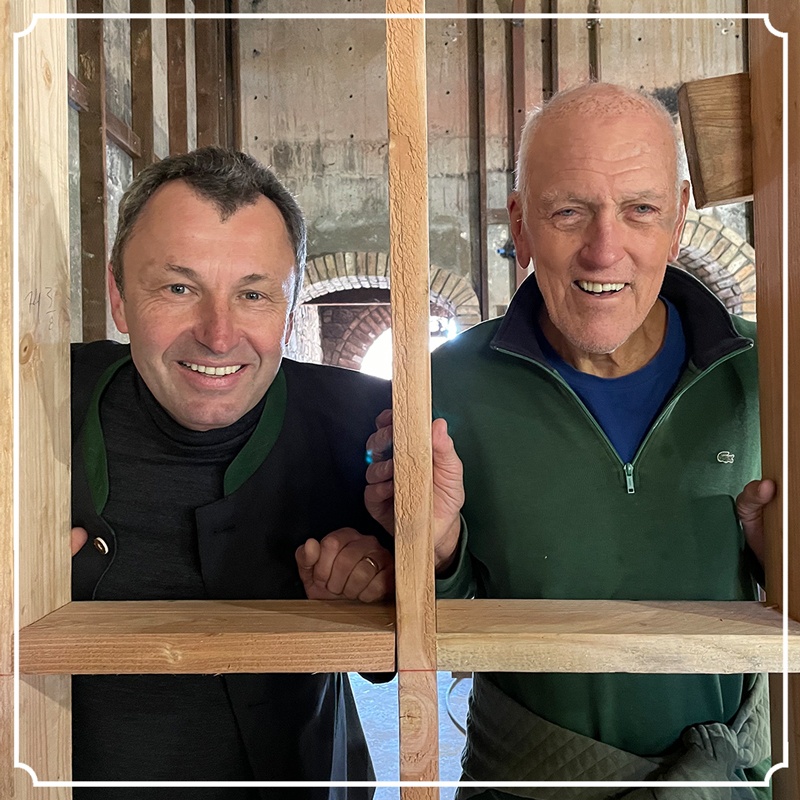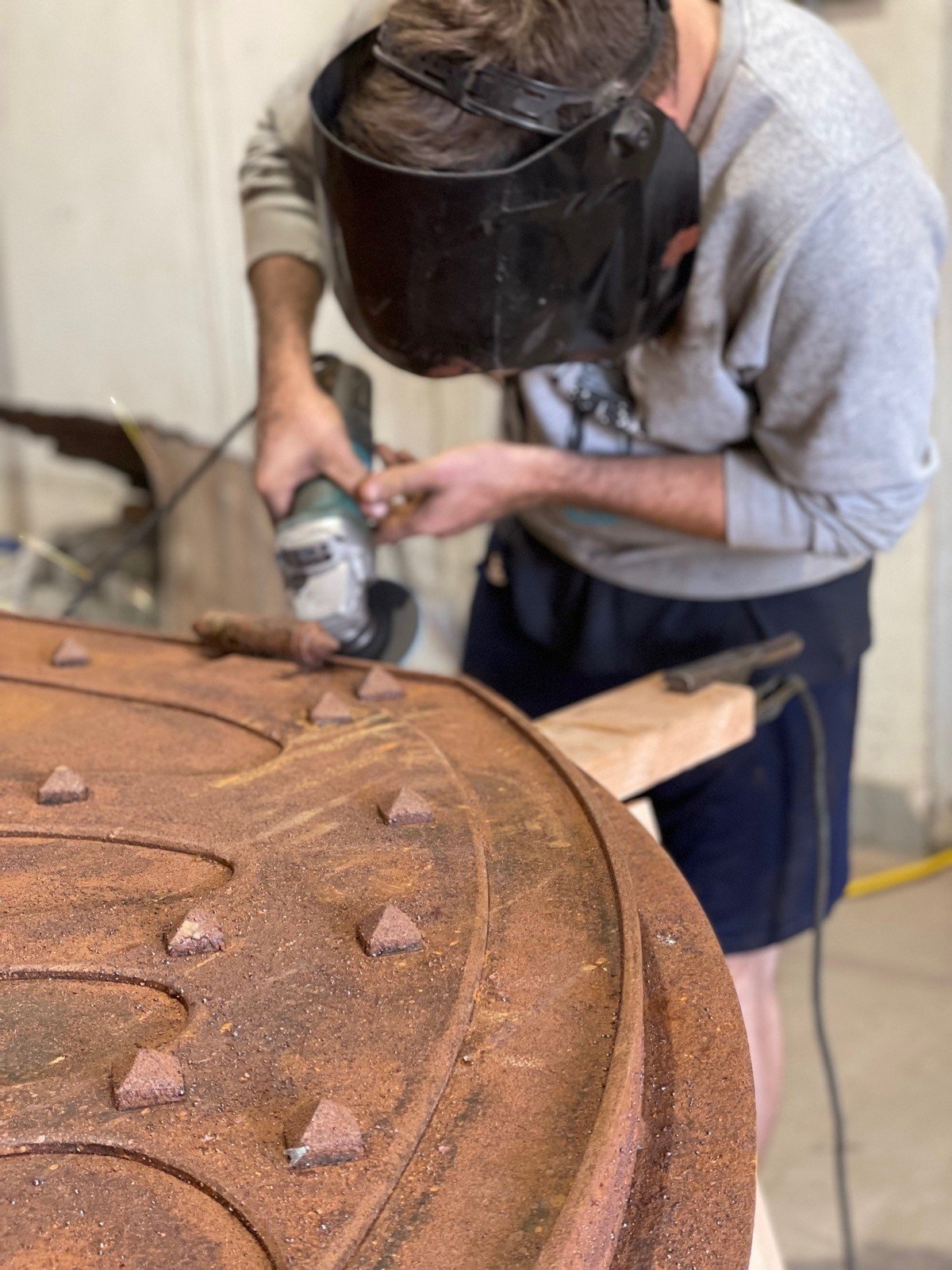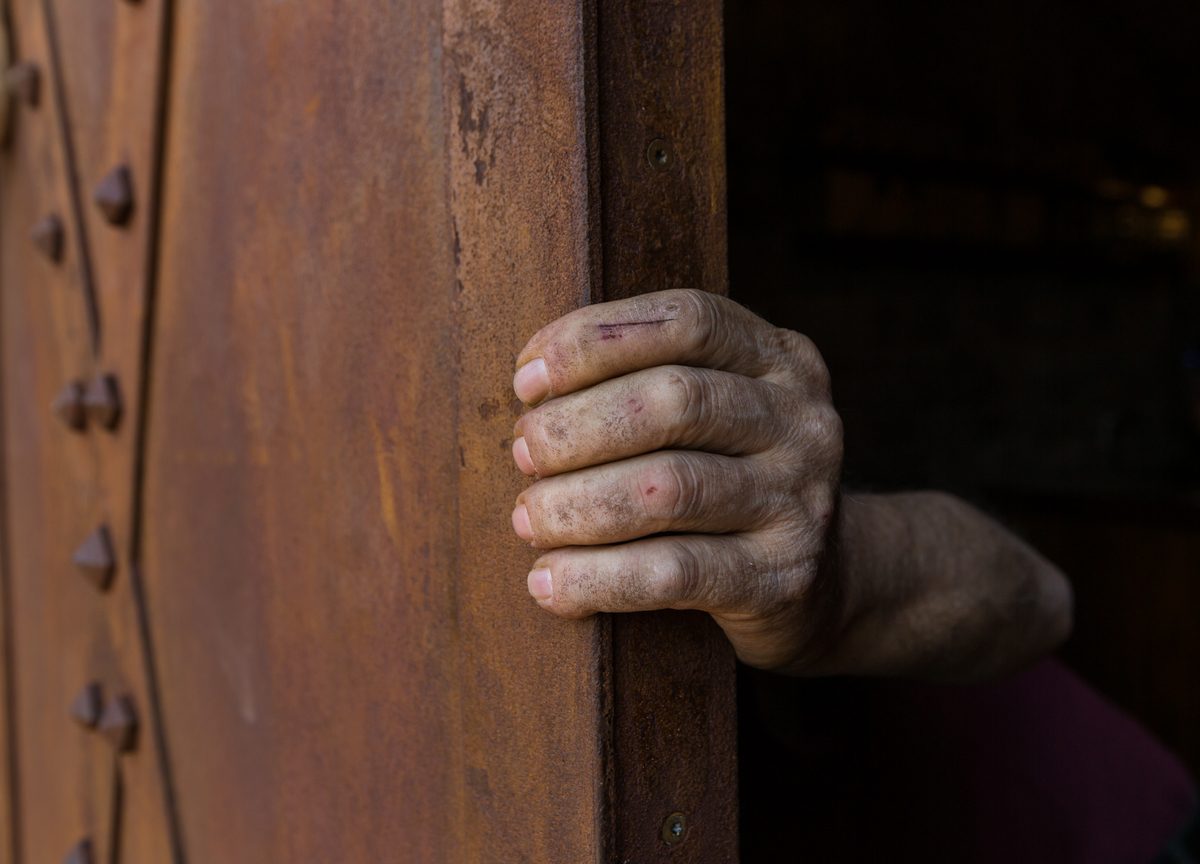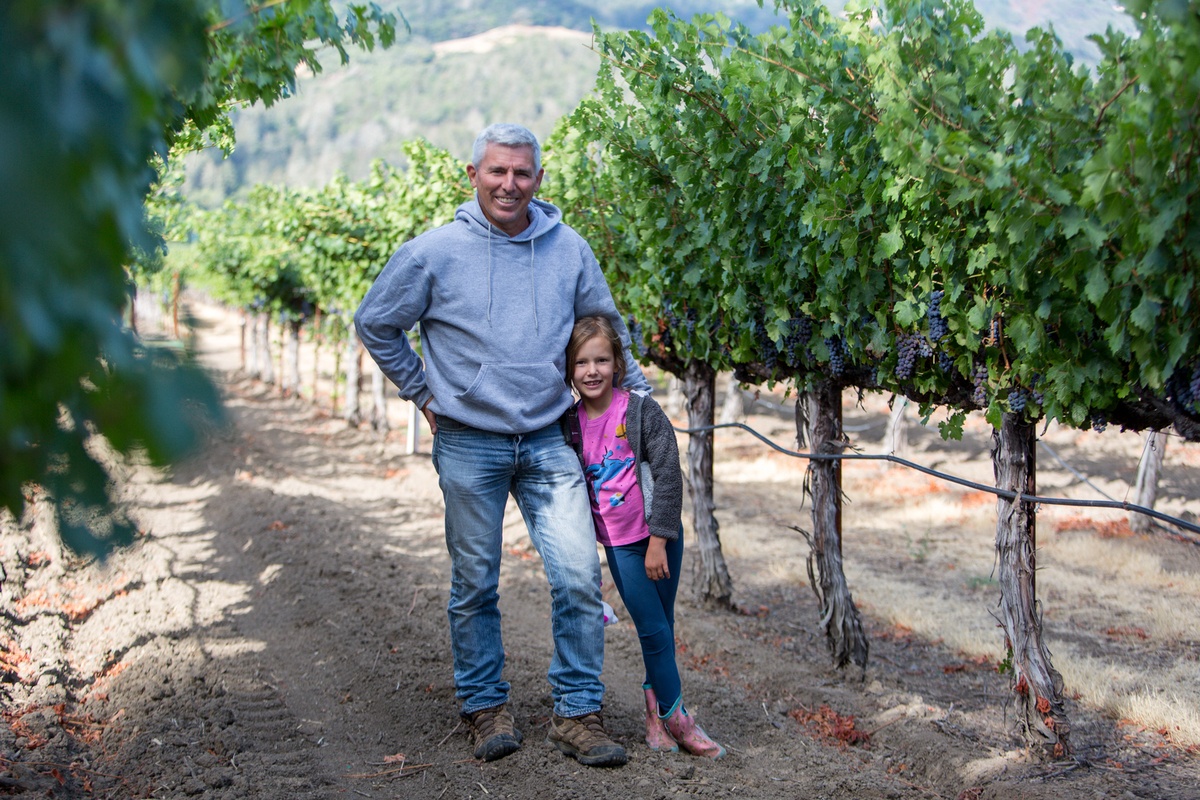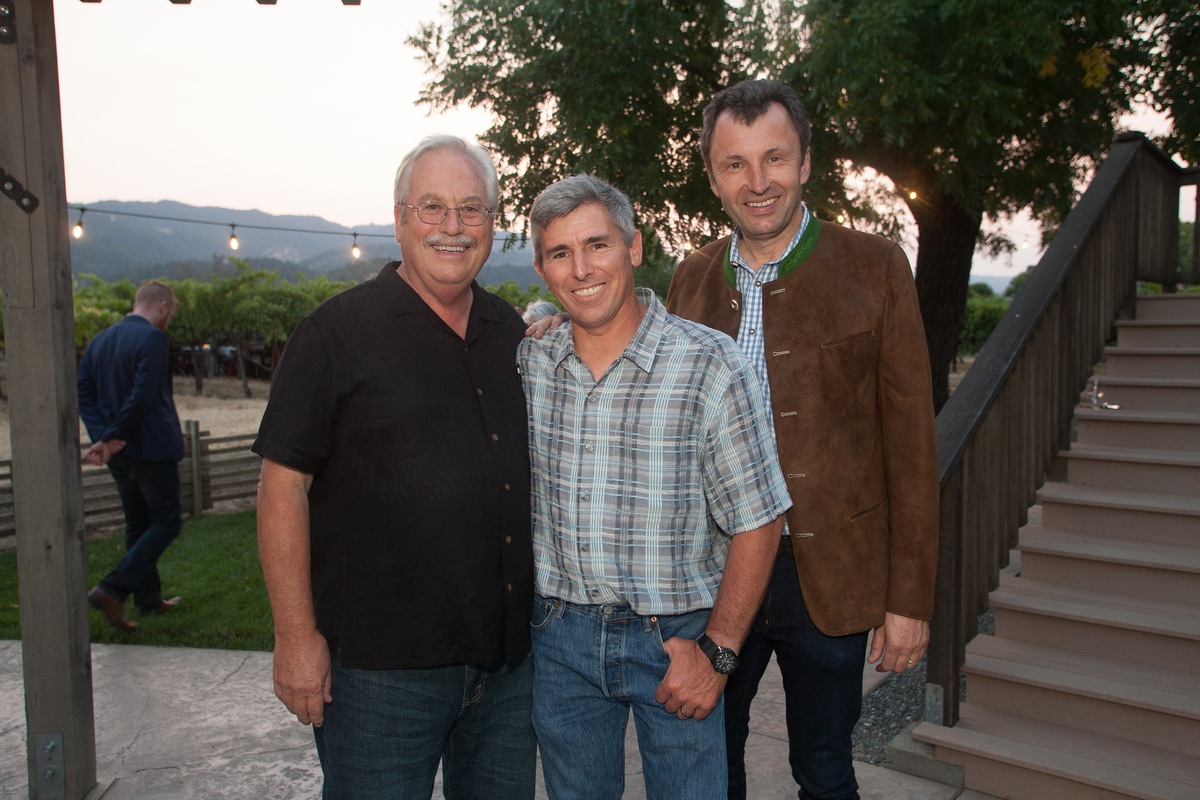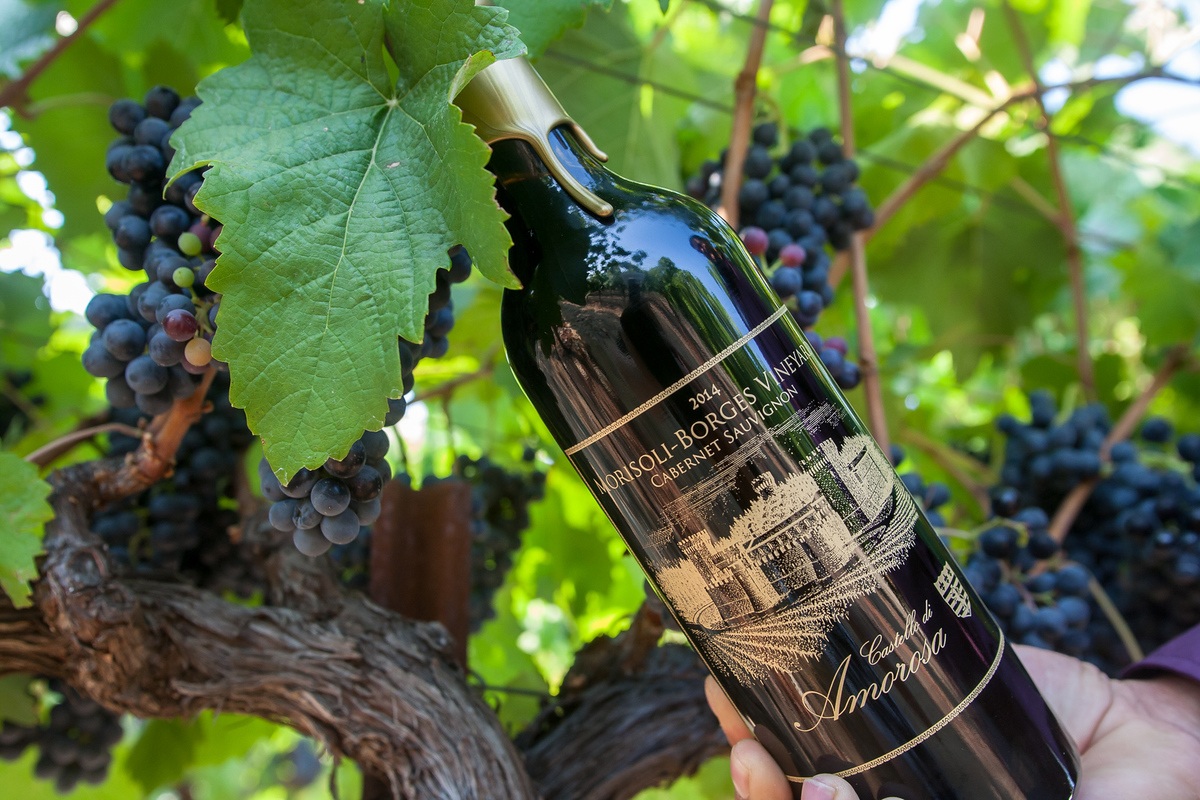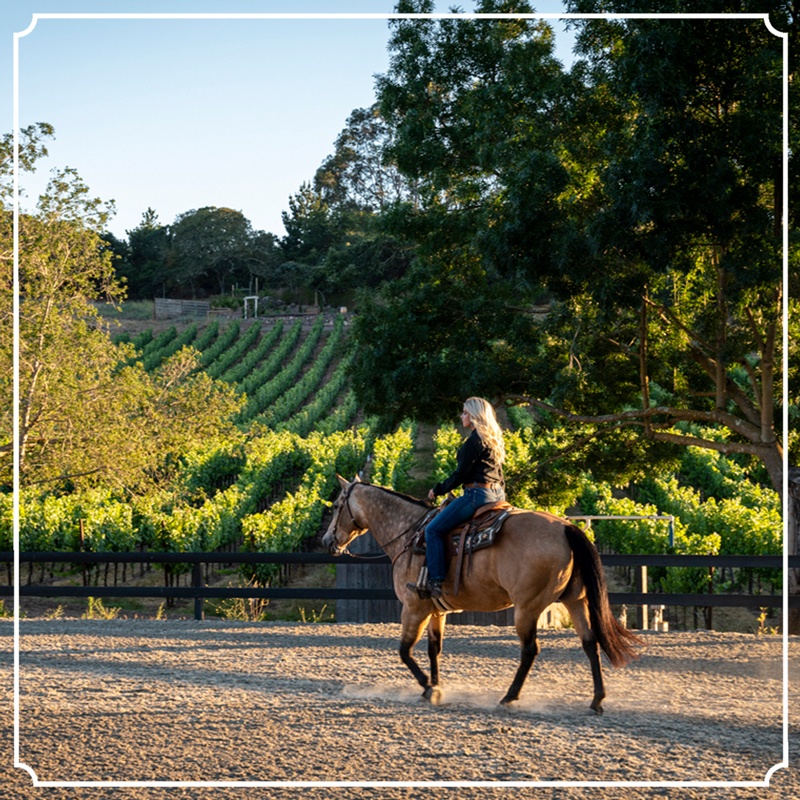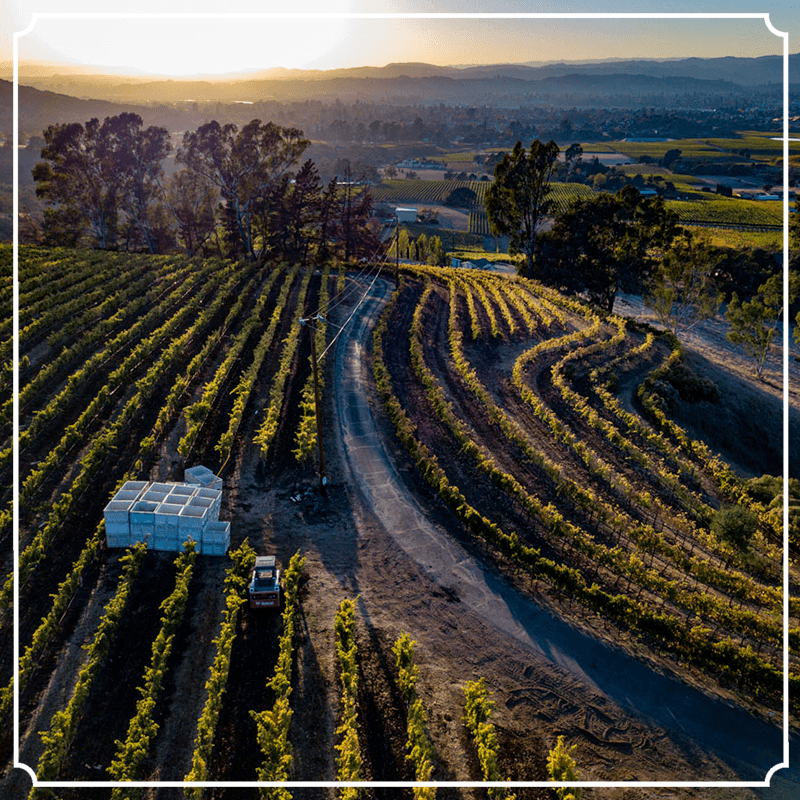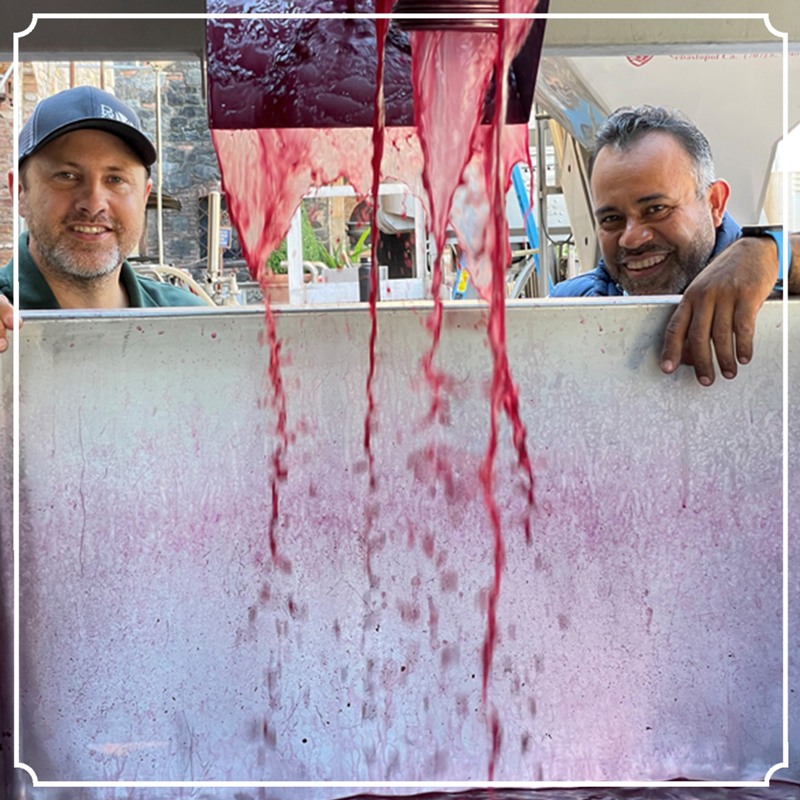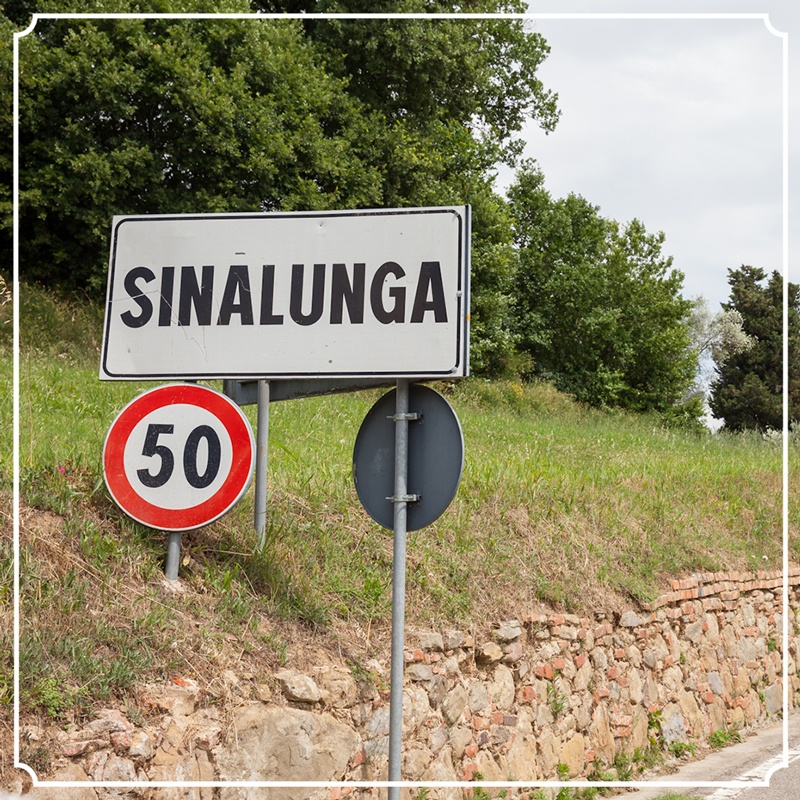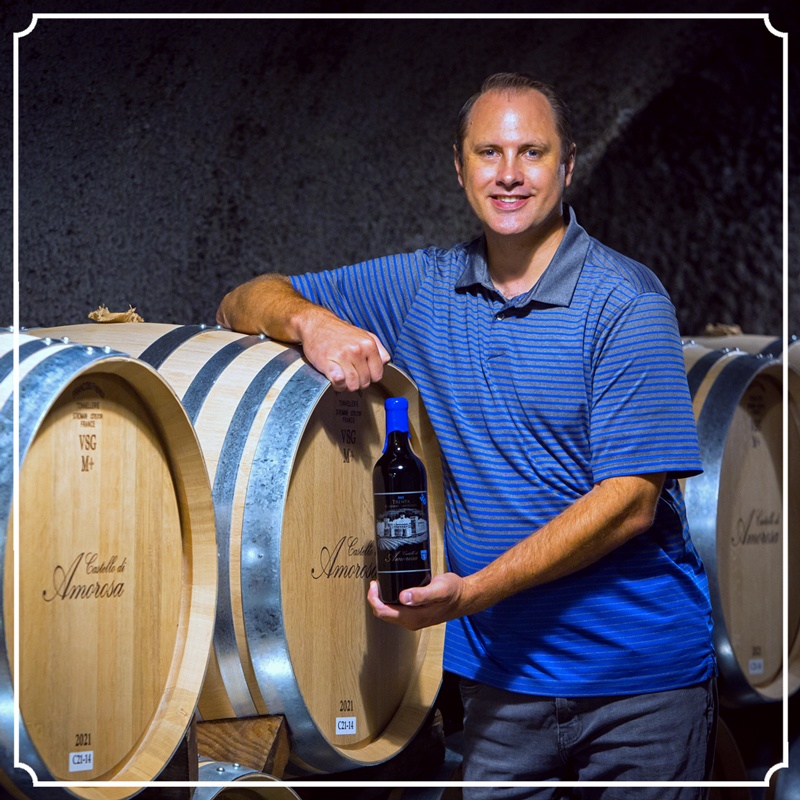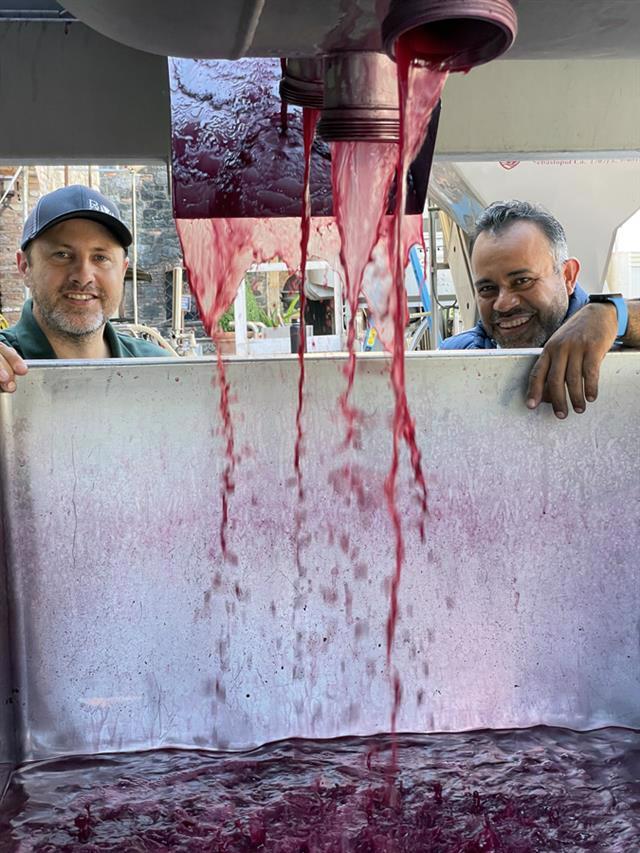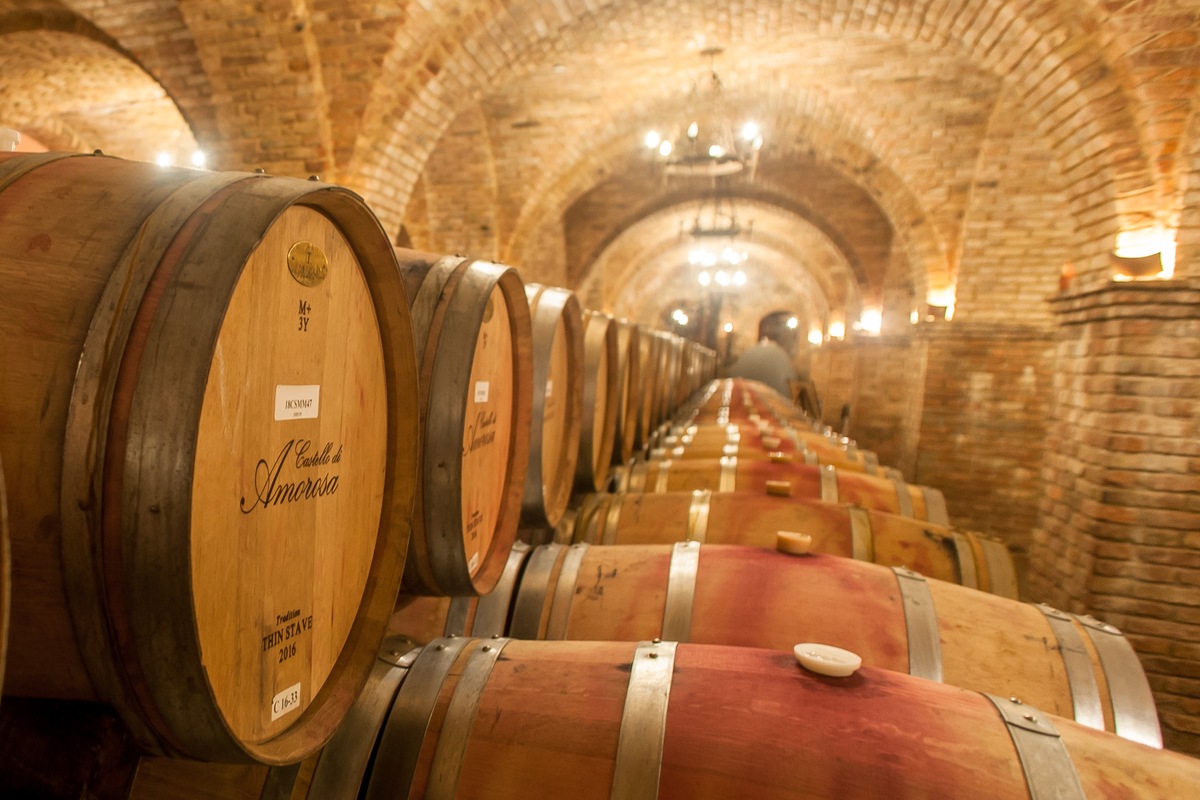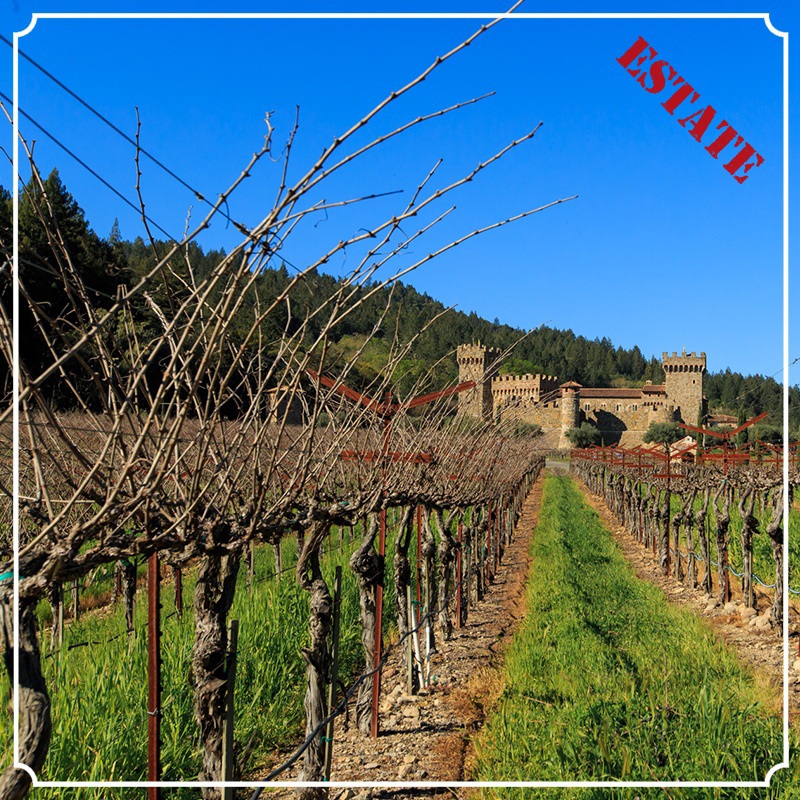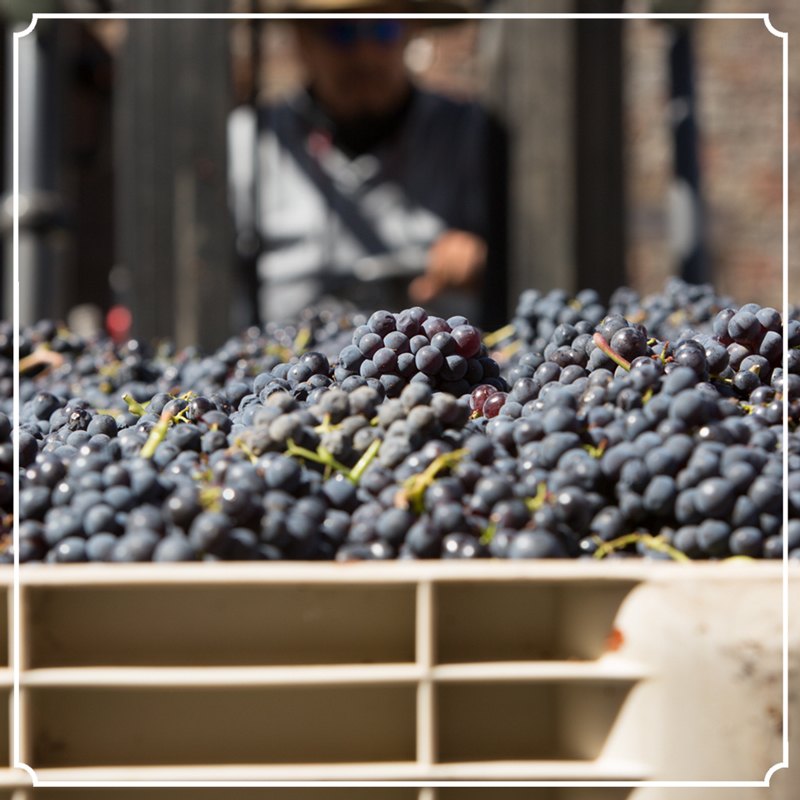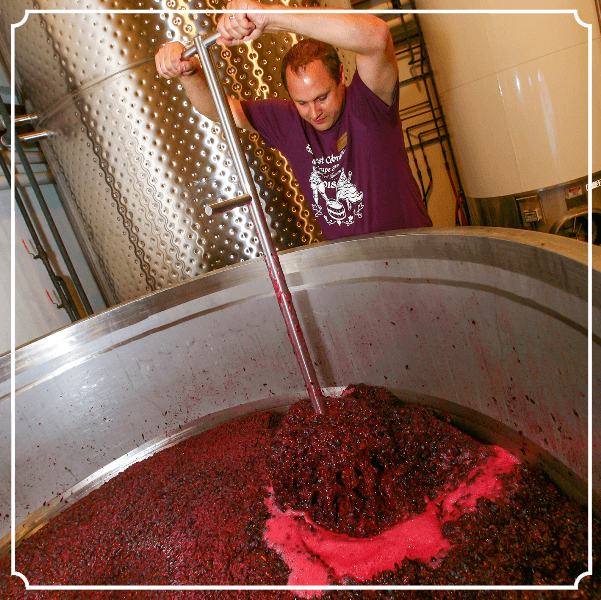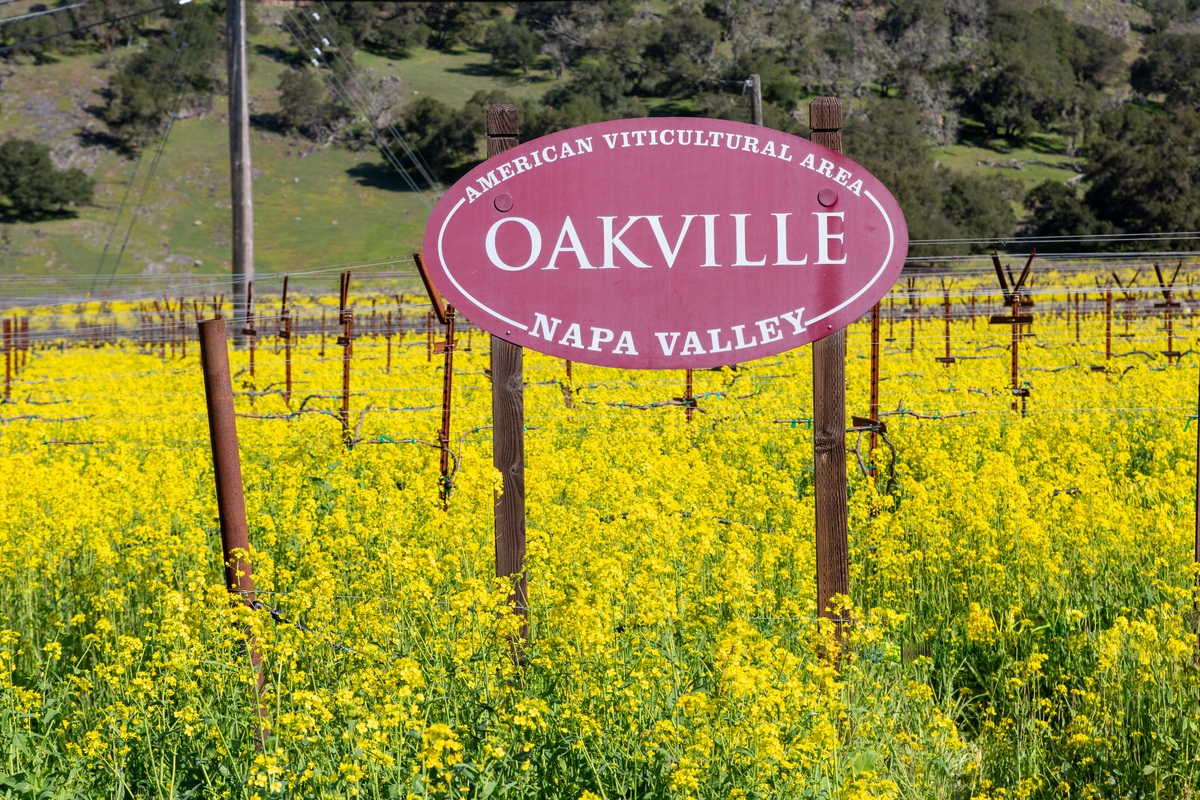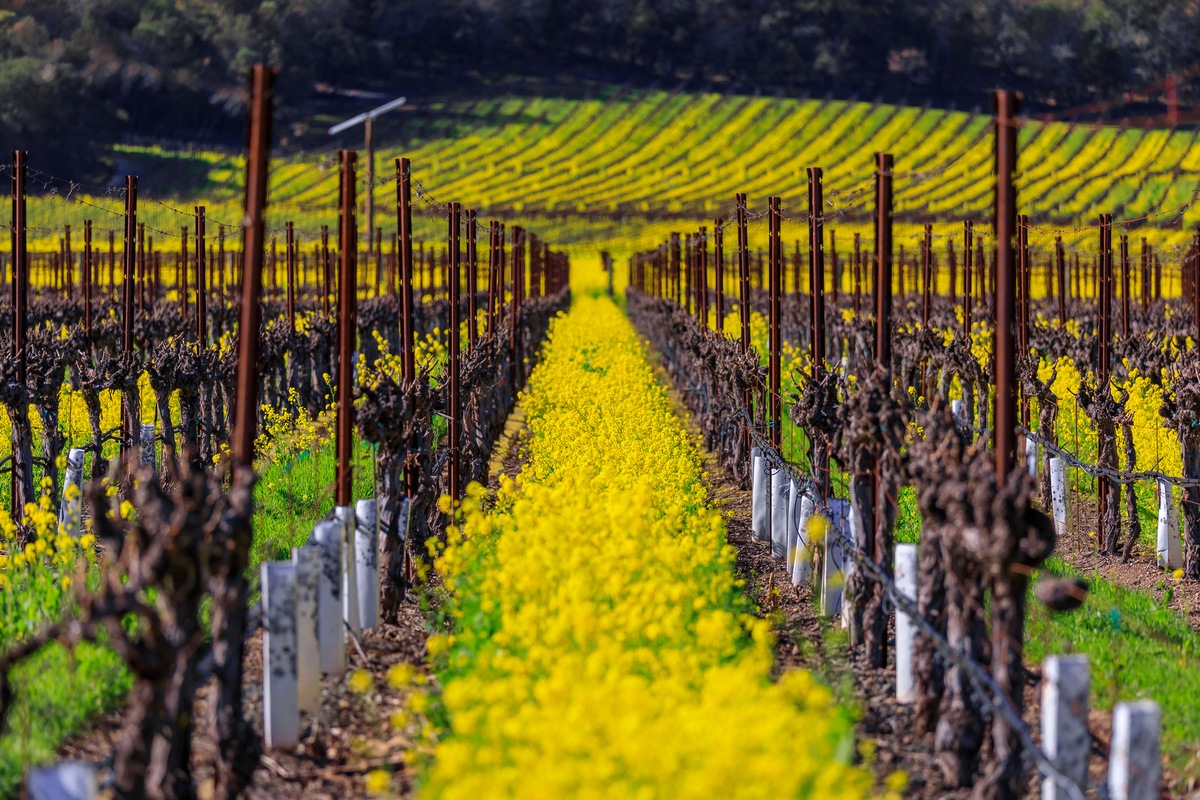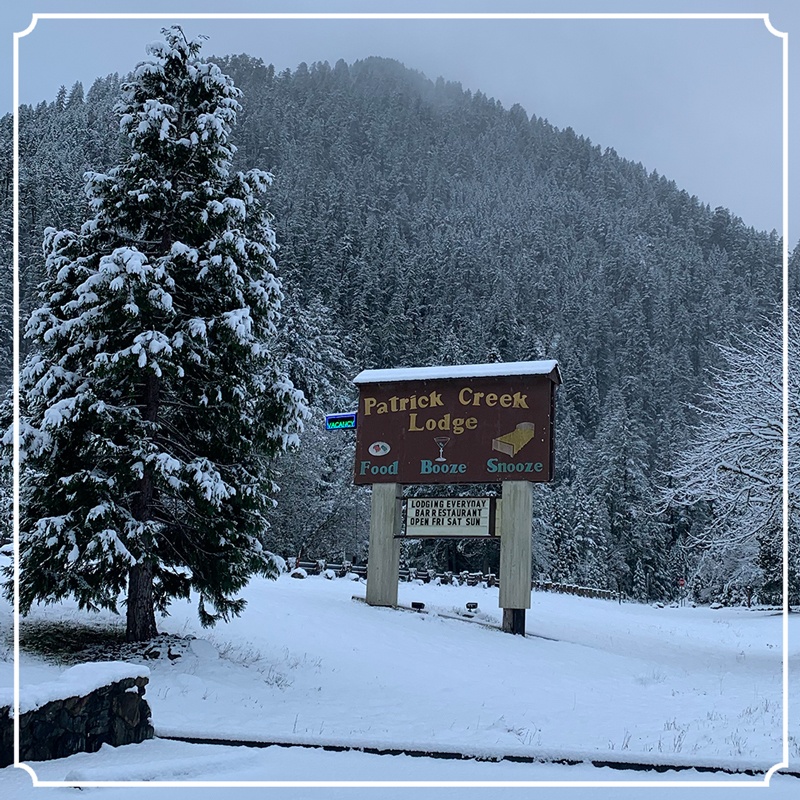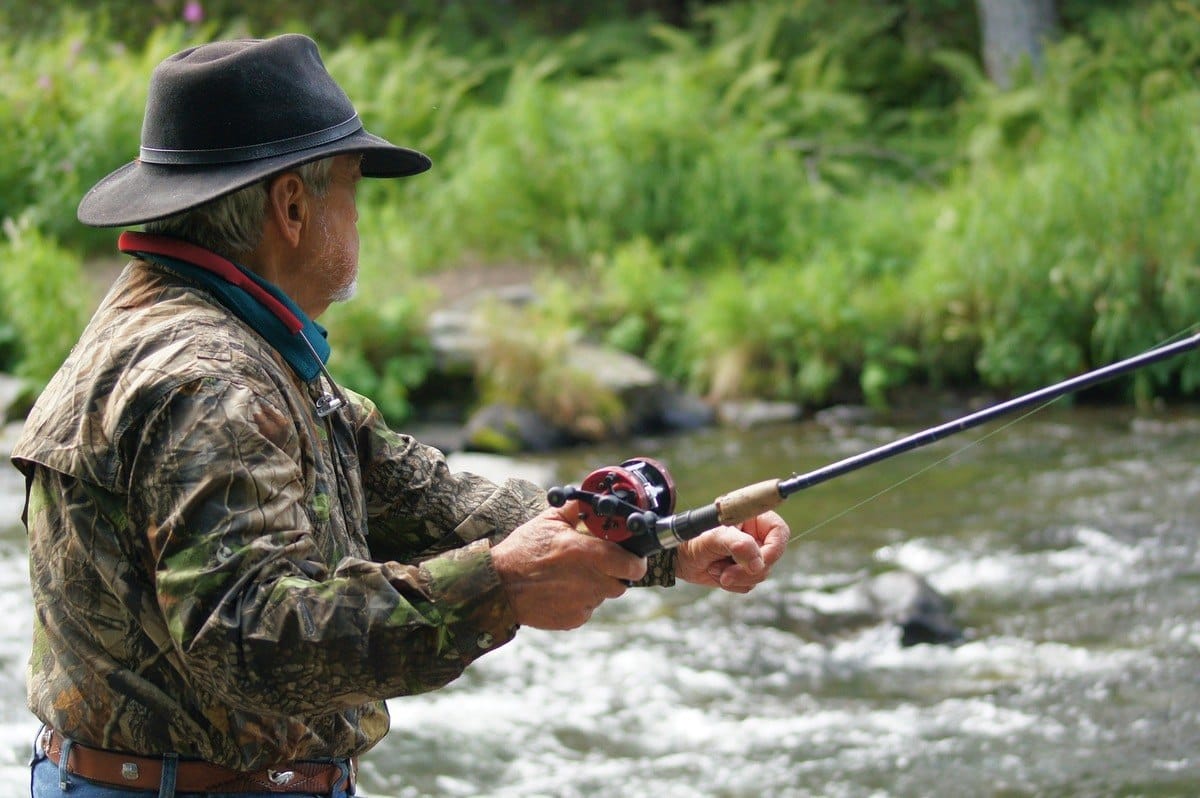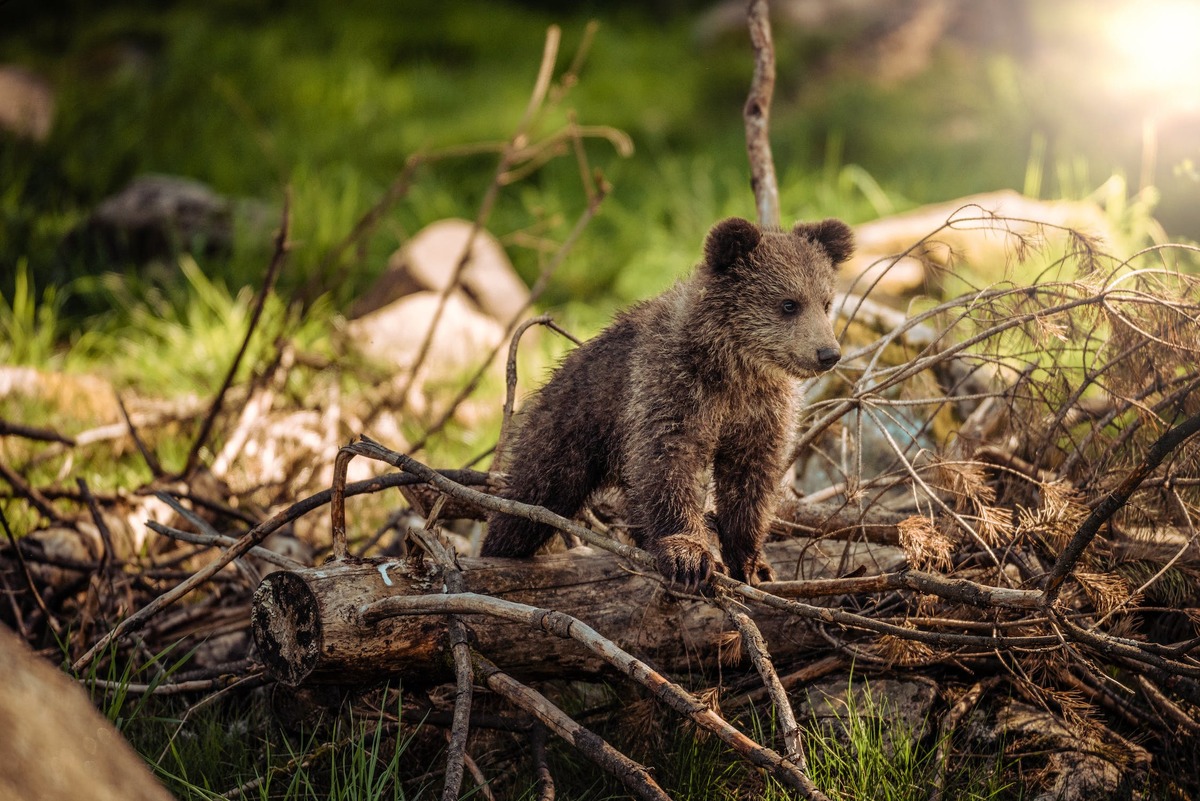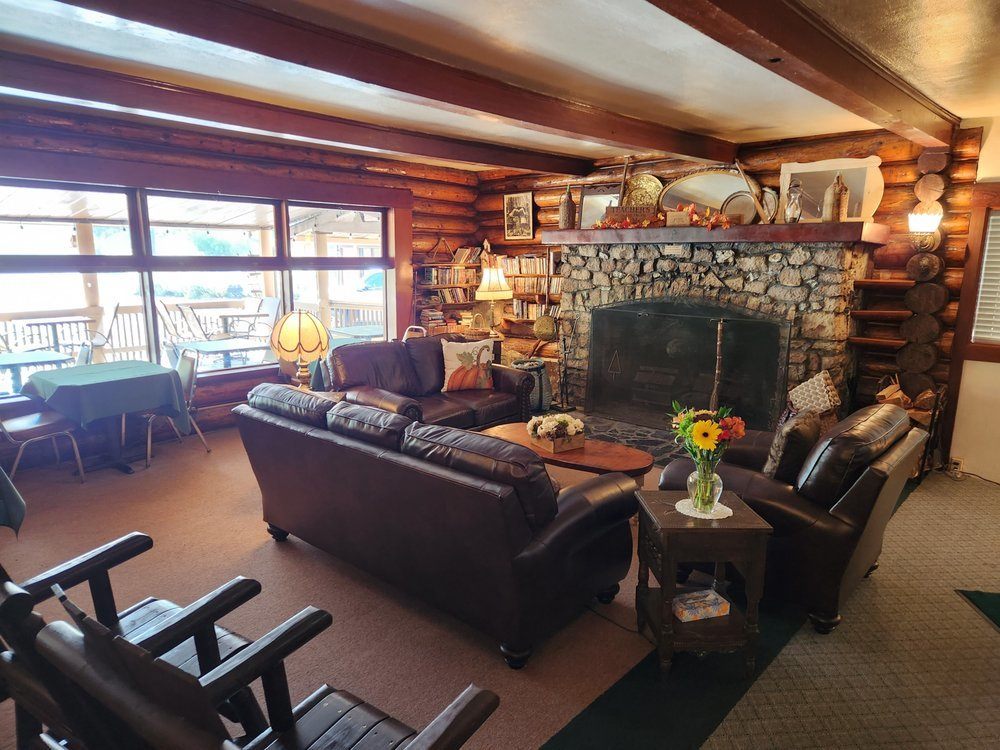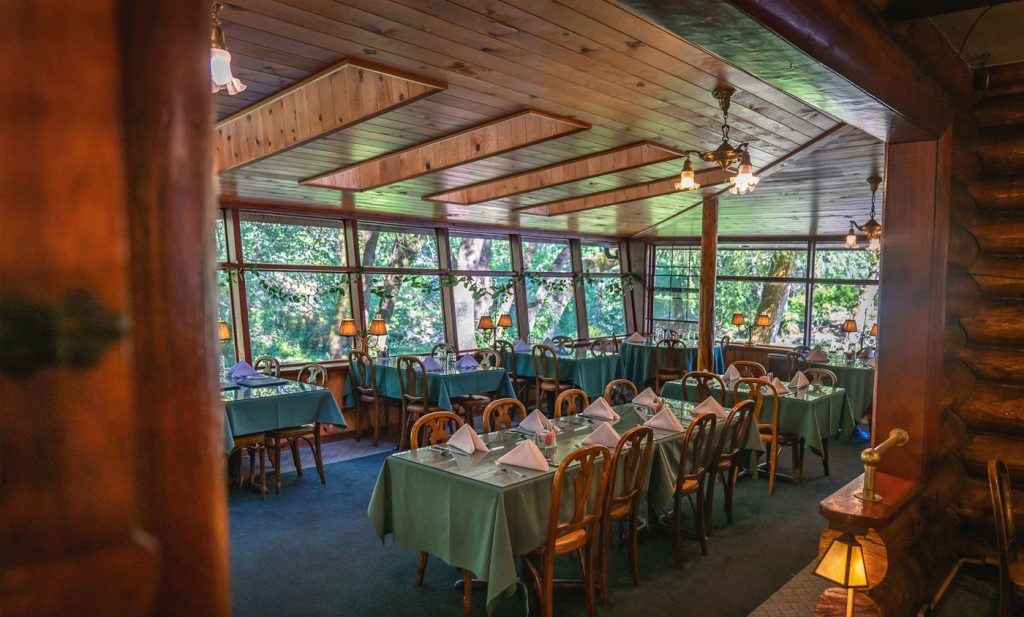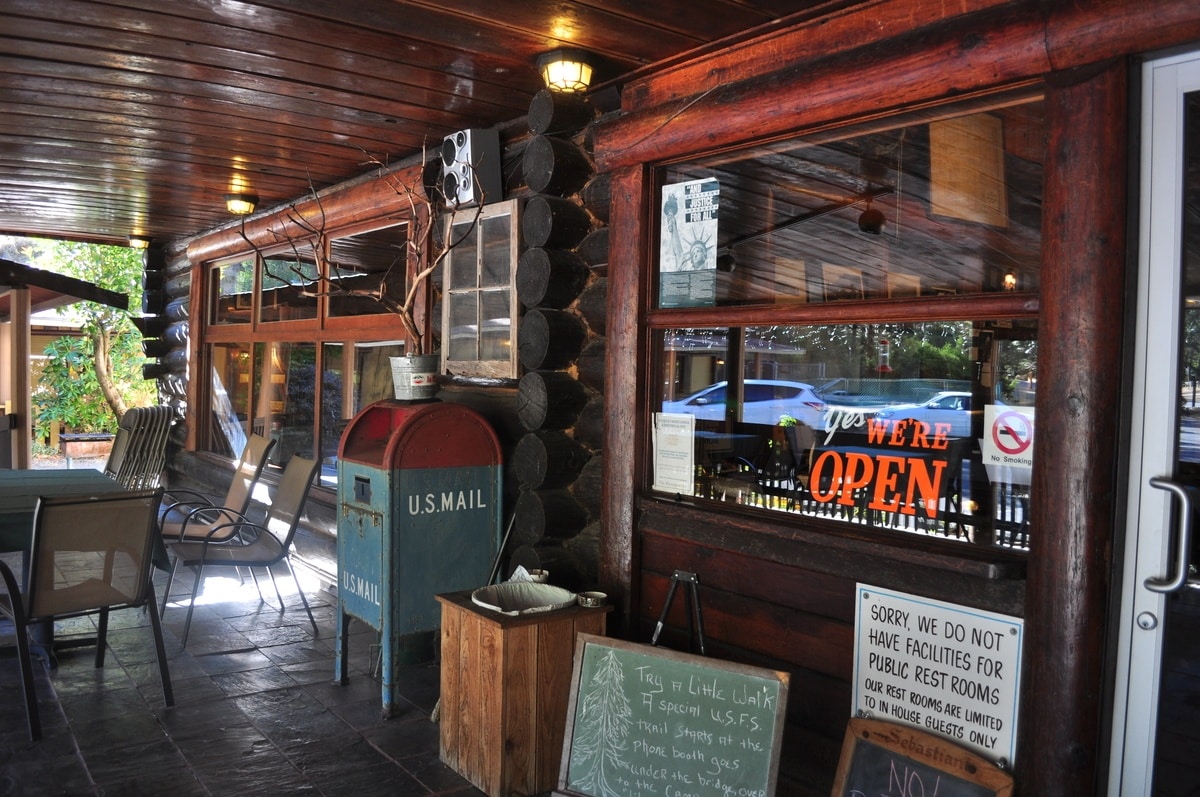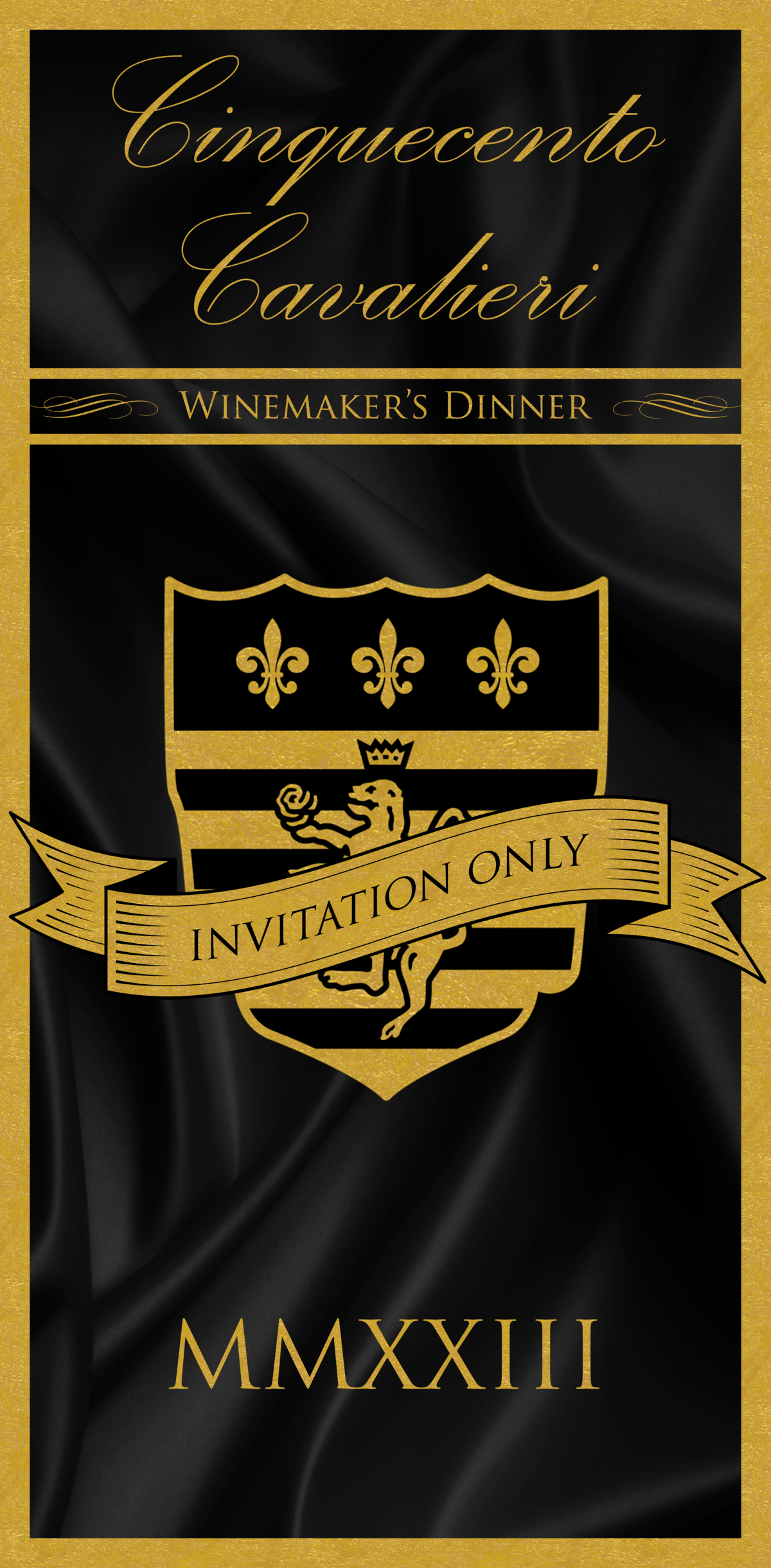Italians Come To Castle To Install Doors And Windows

Jim Sullivan
Jim Sullivan, Vice President of Public Relations and Marketing spearheads Castello di Amorosa’s publicity and marketing initiatives.
With over 20 years of marketing, public relations and business development experience with professional motorsports teams and in a variety of healthcare organizations in Southern California, Jim first joined Castello di Amorosa in 2008 as Public Relations and Marketing Manager.
An avid cyclist, Jim fell in love with wine and wineries while exploring the Washington State countryside. His love of wine was reinforced during subsequent trips to the Napa Valley to visit family.
Jim holds an MBA from the University of Redlands and a Bachelor of Science from Central Washington University. He resides in Calistoga, Calif.
Italians Come To Castle To Install Doors And Windows
It has been a whirlwind couple of years since Dario Sattui started the process of sourcing the materials to rebuild the Castello di Amorosa Farmhouse. Situated on the crush pad and overlooking Castello’s Diamond Mountain District Cabernet Sauvignon vineyard, the Farmhouse needed lots of love. And who better to bring the love than designer and builder himself, Dario Sattui.
“The September 2020 Glass fire destroyed our 9,000 square foot farmhouse which we are rebuilding,” said Dario Sattui, Creator of Castello di Amorosa, a 14th century authentically built Tuscan-style castle and winery located in Calistoga, Napa Valley. “The fire destroyed over 100,000 bottles of the castle’s wine, almost all our offices, a wine laboratory, a bottling line, a truck, fermenting wine, and a forklift,” he added.
Following several trips to Italy to source the same old-world material used to build the Castello, Sattui saw the fruits of his search arrive on the Napa Castle loading dock – Doors, beautiful hand-crafted doors.
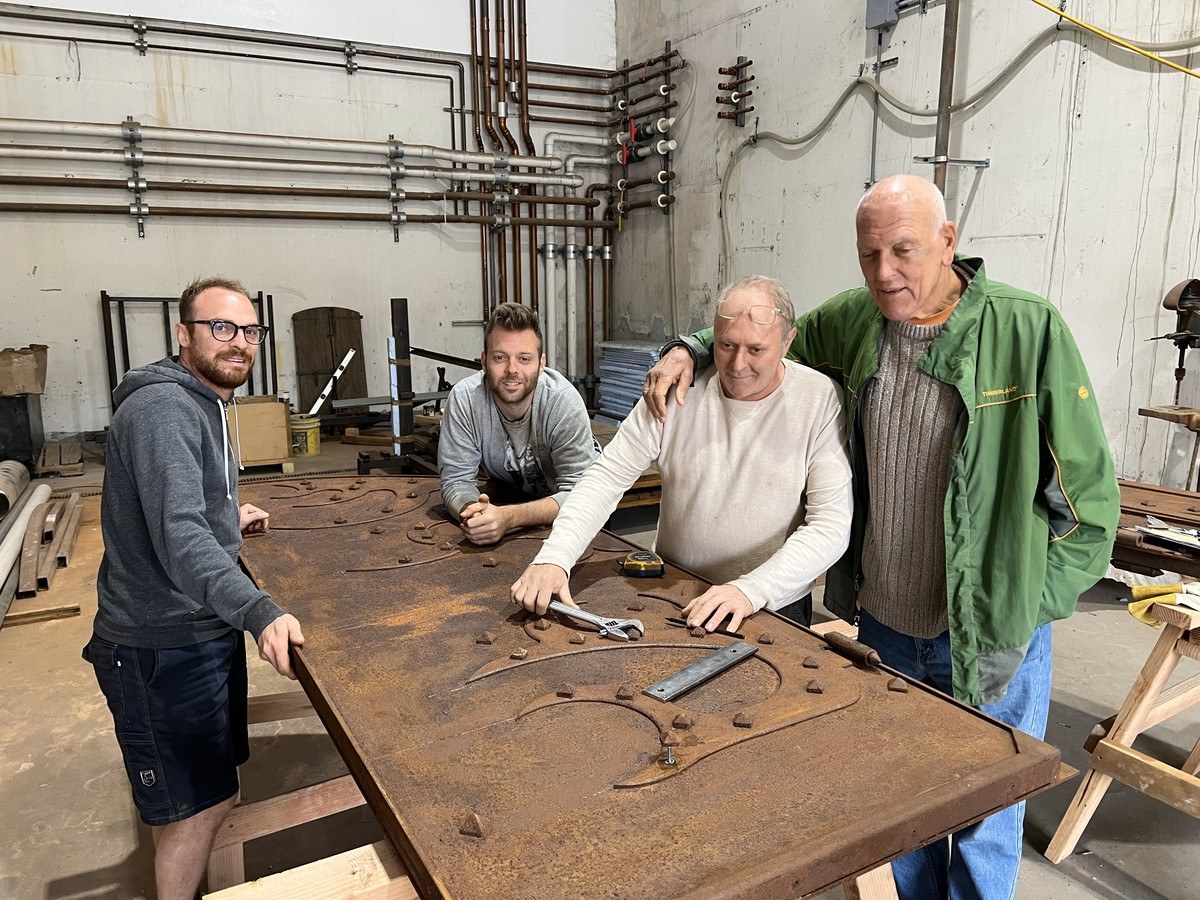
Giorgio Mariani, a master blacksmith, his son Mircu and Luca, all blacksmiths came to the castle from Assisi, Italy in August to install the new Italian doors and windows they made along with a carpenter in Italy. The three Italian craftsmen hand-made every nail and all the iron decorative pieces over the open fire, the traditional way it used to be done.
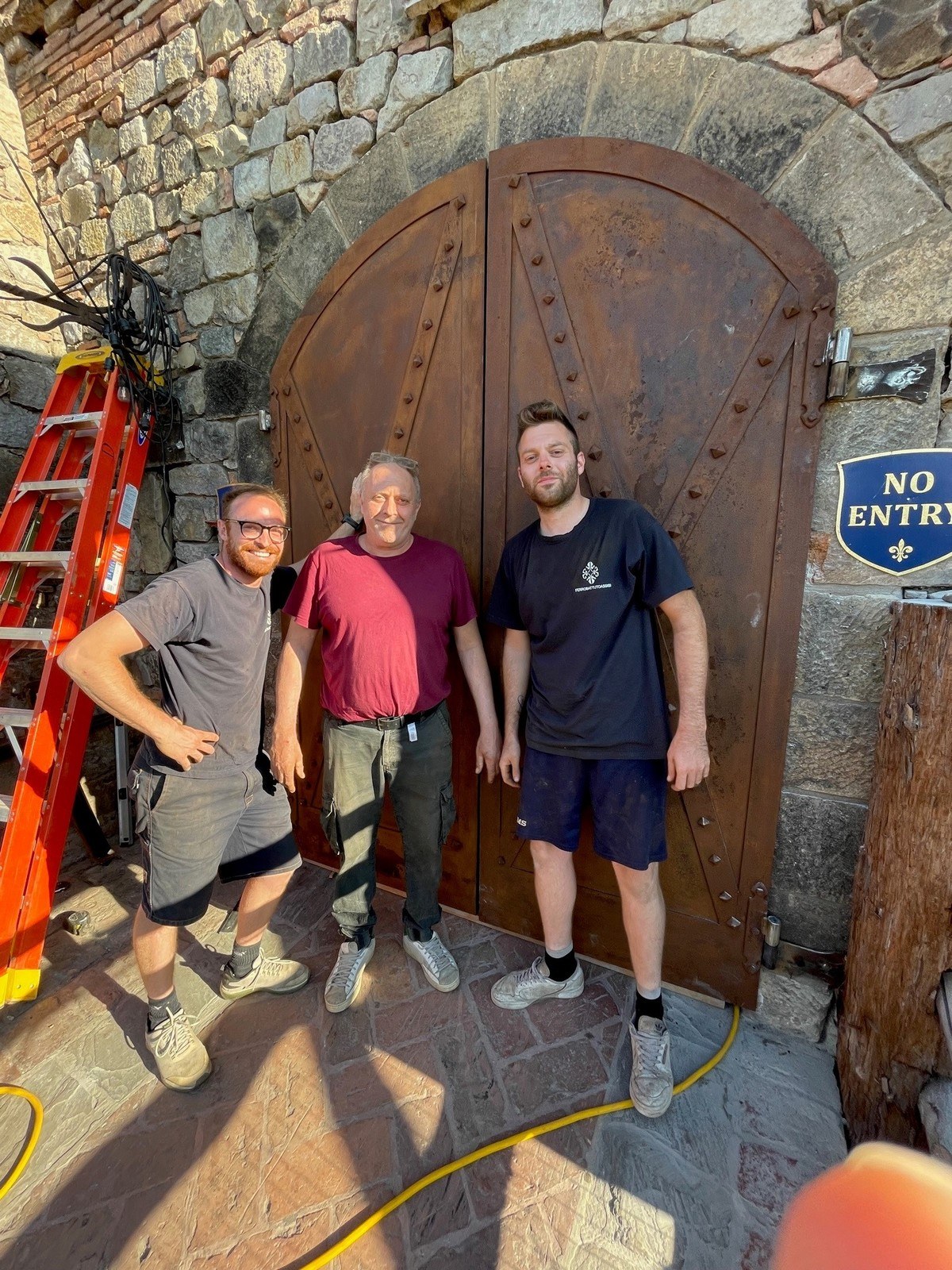
The work is beautifully done, of which Giorgio is very proud. Giorgio and a carpenter made all the original doors, windows, iron lamps and gates almost twenty years ago, before the castle opened. We have since become good friends.

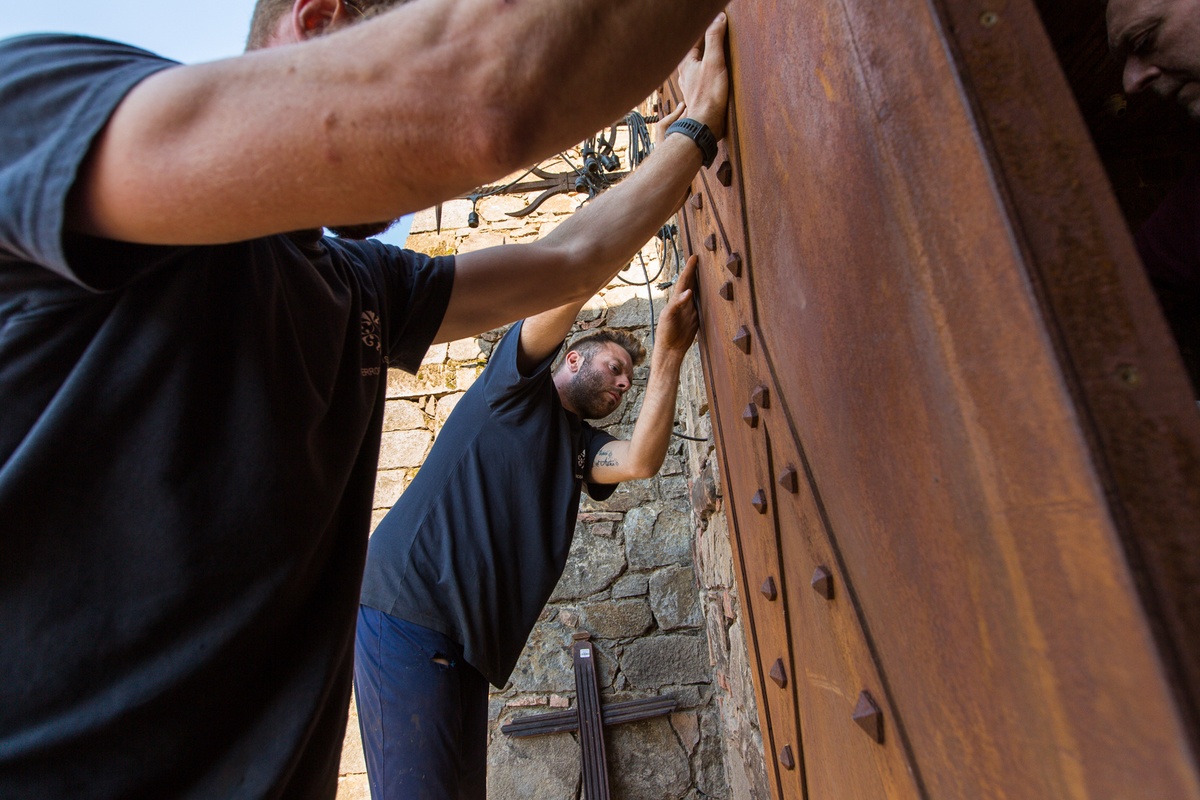
Explore Morisoli-Borges

Explore Morisoli-Borges Vineyard in Napa Valley’s Rutherford Bench
Nestled at the heart of Napa Valley’s renowned “Rutherford Bench,” the Morisoli Family vineyard stands as a living testament to four generations of unwavering dedication to crafting exceptional Cabernet Sauvignon. Originating in the early 1900s, the Morisoli legacy took root in the western expanse of Rutherford, where their grape cultivation journey began. Today, under the sustainable stewardship of the fourth generation, this vineyard seamlessly blends “old” and “young” Cabernet Sauvignon blocks, each nurtured with meticulous care. The resulting wine eloquently captures the celebrated “dust” character intrinsic to Rutherford, enfolding the palate with its tender, velvety tannins.
Since 1900
The Morisoli Family’s grape-growing journey, dating back to 1900, continues into the present with Mike Morisoli. In 1971, Mike Morisoli’s parents purchased this very vineyard, located on the west side of Highway 29, and just south of Niebaum Lane, continuing the family’s tradition of winemaking excellence. The vineyard transitioned primarily to Cabernet Sauvignon in the late 1980s, with a subsequent smaller redevelopment in 2006.
The Legendary Rutherford Dust
Positioned deep within the Napa Valley, the Rutherford Bench emerges as a distinctive American Viticultural Area. Its heart lies in the small town of Rutherford, California, renowned for its picturesque views and quiet small town charm. Its well-drained soil, a blend of gravel, loam, and sand enriched by volcanic deposits and marine sediments, is a canvas for viticultural artistry. In a modest expanse spanning 6,650 acres, this appellation weaves its magic.
The Rutherford region offers a complexity mirroring Napa Valley’s own intricate tapestry. A sanctuary for late-ripening grapes, nestled in the valley’s core. This deliberate pace imparts finesse and intricate layers to the wines. Amplified by deeper soils and diverse microclimates, it stretches growing seasons and nurturing “hang time,” resulting in tannins with a velvety, ethereal character. The wines from these soils embody a delicate dance of “fine dusty tannins,” accompanied by hints of plush cocoa powder. The Rutherford AVA encapsulates more than geography; an unfolding experience in every sip.
Mike Morisoli and The Next Generation of The Morisoli Family
“Rutherford dust” is a term for the fine, dusty tannins found in wines from Rutherford AVA, Napa Valley. These tannins enhance texture, mouthfeel, and aging potential, attributed to the region’s soil, climate, and grape conditions giving them a recognizable quality. The concept gained prominence as winemakers and wine enthusiasts began to notice a consistent thread of these fine tannins in wines produced in the region.
The Rutherford Dust Society, founded in 1994, promotes Rutherford’s unique wines. It highlights the “Rutherford dust” concept and fosters a community of local winemakers, organizing events, tastings, and educational programs. This society preserves winemaking heritage and contributes to the reputation as a premier wine-producing area within Napa Valley. The primary goal of the society is to raise awareness about the distinct attributes of Rutherford wines, particularly Cabernet Sauvignon, and to foster a sense of community among the wine producers in the area.
Mike Morisoli with Winemaker Brooks Painter & Castello President Georg Salzner
Limited Production
At Castello di Amorosa we strive to create the highest quality Cabernet possible, we are only able to do this with the finest Grapes available. Mike Morisoli’s Rutherford vineyard fits that profile, with a long history of producing great Cabernet grapes. This single-vineyard site is a beautiful expression of Napa Valley Cabernet Sauvignon. As a proud representation of Rutherford’s unique terroir, this limited-edition 2017 Morisoli-Borges Cabernet, with its luscious notes of blueberries, blackberry jam, cassis, and graphite, stands as a true expression of Napa Valley’s winemaking prowess and is destined to age gracefully for more than two decades. The wine expresses the Rutherford appellation’s famous “dust” character, with its unique soft, silky tannins. Expected to easily age 20+ years.
Past Awards & Accolades
Explore our past awards and accolades for our Morisoli-Borges Cabernet Sauvignon.
♦ 95+ Points – Jeb Dunnuck
“The 2018 Cabernet Sauvignon Morisoli-Borges from the Rutherford region of the valley is a beautiful 2018 that does everything right. Lots of spiced currants, mulled plums, cedarwood, loamy earth, and dried tobacco give way to a medium to full-bodied, concentrated, spicy, complex wine that needs 3-4 years of bottle age.”
♦ 95 Points – Antonio Galloni
“The 2018 Cabernet Sauvignon Morisoli-Borges Vineyard offers a striking expression of Rutherford. Beautifully layered and ample, the Morisoli-Borges is a stunner right out of the gate. Inky dark fruit, chocolate, licorice, cloves, espresso and lavender all build in a resonant, super-expressive Cabernet that delivers the goods, and then some.”
♦ 93 Points – James Suckling
“Black and blue berries, mushrooms, earthy notes and chocolate as well. It is full-bodied with firm tannins and an ample, flavorful and long finish. I liked the slightly herbal undertone at the end. Try after 2023.”
♦ 97 Points – Jeb Dunnuck
“Sourced all from the famed “Rutherford-Bench” section of the valley and all Cabernet, the 2017 Cabernet Sauvignon Morisoli-Borges Vineyard sports a saturated purple hue as well as loads of spice, crushed violets, leafy herbs, chocolate, and cedar all supported by beautiful blueberry and wild strawberry fruits. Plush and sexy on the palate, with full-bodied richness and more opulence and decadence than most in the vintage, it hits all the right spots and is a beautifully balanced, sexy 2017 to enjoy over the coming 20-25 years or more.”
♦ 93 Points – James Suckling
“Attractive aromas of fresh fruit with a ripe array of redcurrants and raspberries, as well as blackcurrant and violet notes. The palate has a sleek, juicy and fleshy feel with plenty of ripe, rich fruit and a smooth-honed, long and plush texture. Drink or hold.”
♦ 96 Points – Jeb Dunnuck
“The 2016 Cabernet Sauvignon Morisoli-Borges Vineyard is cut from the same cloth with its flowery blue and black fruits, complex tobacco, cedary spice, and herbal notes, medium to full body, and sweet, yet certainly present tannins. It shines for its sheer purity of fruit and balance and is another pure class release from this team. It will keep for 3 decades. Drink 2019 – 2049.”
♦ 94+ Points – Lisa Perrotti-Brown, The Wine Advocate
“Made of 100% Cabernet Sauvignon, the deep purple-black colored 2016 Cabernet Sauvignon Morisoli-Borges gives up scents of warm blackberries, crushed red and black cherries and black currants with hints of cigar box, tilled soil and mossy bark. Full-bodied with a solid, muscular mid-palate of pure black and red fruits, it has a firm line of grainy tannins and an invigorating lift on the long finish. Drink 2019 – 2035.”
♦ 93 Points – James Suckling
“A rich and layered red with currant and blackberry character. Full body, round and caressing tannins and a flavorful finish. Pure Cabernet Sauvignon. Drink or hold.”
♦ 93 Points – Lisa Perrotti-Brown, The Wine Advocate
“The deep garnet-purple colored 2015 Cabernet Sauvignon Morisoli Borges is 100% Cabernet Sauvignon and offers spicy aromas of cedar chest, blackberries and blueberry compote with notes of licorice and fragrant earth. Full-bodied and concentrated in the rich, spicy mouth, it has firm, chewy tannins and finishes long and a bit oaky.”
♦ 92 Points – James Suckling
“Intense aromas of blackberries, tar, blueberries and mint, following through to a full body. Round and silky tannins and a flavorful finish. Fruit-forward but still fresh. Drink or hold.”
♦ 98 Points – Jeb Dunnuck
“The 2014 Cabernet Sauvignon Morisoli-Borges Vineyard comes from a site located in Rutherford, on the valley floor. It too is inky colored and offers a sensational bouquet of crème de cassis, blueberries, graphite/lead pencil shavings, tons of crushed rocks and hints of violets. Layered, gorgeously pure, concentrated and always elegant and silky, with no sense of heaviness, enjoy this blockbuster anytime over the coming 3-4 decades. (Expected Maturity: 2018–2058)”
♦ 96 Points – Robert Parker, The Wine Advocate
“Coming from the valley floor, the 2014 Cabernet Sauvignon Morisoli-Borges Vineyard hails from the tenderloin of the so-called bench area. It shows gorgeous fruit, loads of blueberry, blackberry and cassis notes, licorice and incense followed by an opulent, voluptuously textured, super-sexy style with oodles of glycerin, fruit and extract. This is a stunner and irresistible already. Moreover, it should age nicely for another 15 or more years.
♦ 91 Points – Antonio Galloni, Vinous Media
“The 2014 Cabernet Sauvignon Morisoli-Borges Vineyard is one of the more powerful wines in the range. It also comes across as a bit compact at this stage and in need of further cellaring, although it is likely to always remain a bit on the linear side of things.”
♦ 94 Points – Robert Parker, The Wine Advocate
“The 2013 Cabernet Sauvignon Morisoli-Borges Vineyard, which comes from the Rutherford sector of Napa, shows beautiful blueberry and blackberry fruit, camphor and incense, a full-bodied, nicely textured mouthfeel, sweet velvety tannins and a long finish. This is a beauty, and a wine that can be drunk now or cellared for another 20 years.”
♦ 92 Points – Virginie Boone, Wine Enthusiast Magazine
“Compost aromas open this vineyard-designated wine, a full-bodied, densely concentrated exploration of juicy black licorice, coconut, and dust. Soft and lengthy, it develops slowly in the glass, providing a vibrant showcase for the site.”
♦ 91 Points – James Suckling
“Lots of ripe and unctuous fruit showing a light raisin and spice character. Full body, soft tannins and a juicy finish. This is ripe and smooth. Drink or hold.”
♦ 93 Points – Antonio Galloni, Vinous Media
“A big, explosive wine, the 2012 Cabernet Sauvignon Morisoli Borges hits the palate with a rush of dark red and blue fruits, smoke, incense, violets, lavender, orange peel and spices. The firm tannins are going to need time to settle down, so readers should not be in a rush. This is without question the most complex and pedigreed of Castello di Amorosa’s Cabernet Sauvignons. Anticipated maturity: 2017-2027.”
♦ 93-95 Points – Antonio Galloni, Vinous Media (Barrel Sample)
“The 2012 Cabernet Sauvignon Morisoli-Borges Vineyard is flat-out stunning. Rich, opulent and full-bodied, yet backed up by an imposing sense of structure, the 2012 possesses gorgeous depth and pure power. Mocha, plums, licorice, tobacco, graphite and ash all jump from the glass in an opulent, broad-shouldered wine loaded with class and pedigree. This hugely promising Cabernet Sauvignon is one of the best wines I have tasted from Castello di Amorosa.”
♦ 90-92 Points – Robert Parker, The Wine Advocate (Barrel Sample)
“A barrel sample of the dense ruby/purple-tinged, full-bodied 2012 Cabernet Sauvignon Morisoli Borges revealed lots of character as well as copious notes of blueberries, blackcurrants, black cherries, licorice, underbrush and spice. It should turn out to be an outstanding effort to enjoy during its first 10-15 years of life.”
♦ 92 Points – James Suckling
“A soft and silky red with plum, currants, and spice. Fully body and firm tannins that buttress the fruit. Delicious and fruity. Drink now.”
♦ 91 Points – Virginie Boone, Wine Enthusiast Magazine
“From decades’ old vines in the heart of the appellation, this wine conveys dusty milk chocolate and baked plum. It’s 100% varietal, aged almost two years in 60-gallon French oak barrels. Softly layered, and full bodied, it’s approachable now, linear in its acidity.”
♦ 91 Points – Wine & Spirits Magazine
“From a vineyard on the western benchlands of Rutherford, this is a voluminous Napa Valley cabernet with bright fruit ripeness that feels refreshing. What richness it delivers is clean and toned, focused by hints of lemon verbena and cherry skin. This should age with grace.”
♦ 90 Points – Robert Parker, The Wine Advocate
“The estate’s 2009 Cabernet Sauvignon Morisoli-Borges is a soft, supple wine that will drink beautifully over the next few years. Sweet black cherries, plums, herbs and licorice are some of the notes that take shape in this soft, caressing Cabernet Sauvignon. Anticipated maturity: 2012-2016.”
♦ 90 Points – Antonio Galloni
“The estate’s 2009 Cabernet Sauvignon Morisoli-Borges is a soft, supple wine that will drink beautifully over the next few years. Sweet black cherries, plums, herbs and licorice are some of the notes that take shape in this soft, caressing Cabernet Sauvignon. Anticipated maturity: 2012-2016.”
The Story of Quattro

The Story of Quattro: Fortune & Fate From Four Vineyards
Quattro represents the harmonious result of a winemaker’s instinct, quick thinking, and a touch of serendipity. It all began on October 15 during the 2012 harvest, there remained a small quantity of grapes from 4 outstanding Napa Valley Cabernet vineyards, and it looked as though the fermentation vessels were already full. With limited tank space remaining, Winemaker Peter Velleno found himself in a jam. Recognizing the exceptional quality of the fruit, he made a bold decision – to ferment these precious remnants together in a single small tank.
When the time was right, just as the fermentation was nearing its completion, the winemakers gathered to taste the wine. In that moment, it became evident that an ideal blend had taken place. This prompted them to christen it “Quattro,” in honor of its origins from the 4 distinct vineyard sites across the Napa Valley.
Ever since that fateful day, no further blending has been done with this wine, preserving its unique and authentic character that arose from the different vineyards. Quattro remains a testament to the artistry of winemaking and the importance of nature’s elements. Discover the bold character and rich complexity of the 2019 Quattro Napa Valley Cabernet Sauvignon, now available in our online shop.
The vineyards last utilized for this unique Cabernet are Gerlach Hammond, Perata, Rocca, and Villa Amorosa; vineyards typically used in the final blends of our Barone Cabernet Sauvignon and La Castellana Super Tuscan Blend. Quattro’s powerful, structured tannins are backed by hints of blackberry, cassis and leather. This bold Cabernet Sauvignon pairs perfectly with filet mignon.
Past Awards & Accolades
Explore our past awards and accolades for our Quattro, Cabernet Sauvignon.
♦ 94 Points – American Fine Wine Competition 2021- Gold Medal
“More than 550 wines from 125 wineries vied for top honors at this invitation only event. The Judging was conducted by a 28-member blue ribbon panel from across the wine industry, included educators, restaurateurs, retailers, journalists, and top sommeliers from across the country.”
♦ 93 Points – Owen Bargreen
“The outstanding, deeply-colored 2018 Castello di Amorosa ‘Quattro’ Cabernet Sauvignon spent 20 months in 65% new French oak before bottling. Ripe dark currants and huckleberries mark the nose, alongside wet gravel and graphite notes. The palate is soft and very seamless, creating a weightless effect. Drink 2022-2034.”
Pizza & Wine Pairing


Recipe Date: June 20th, 2023
Difficulty: Easy-Moderate
Measurements: Imperial (US)
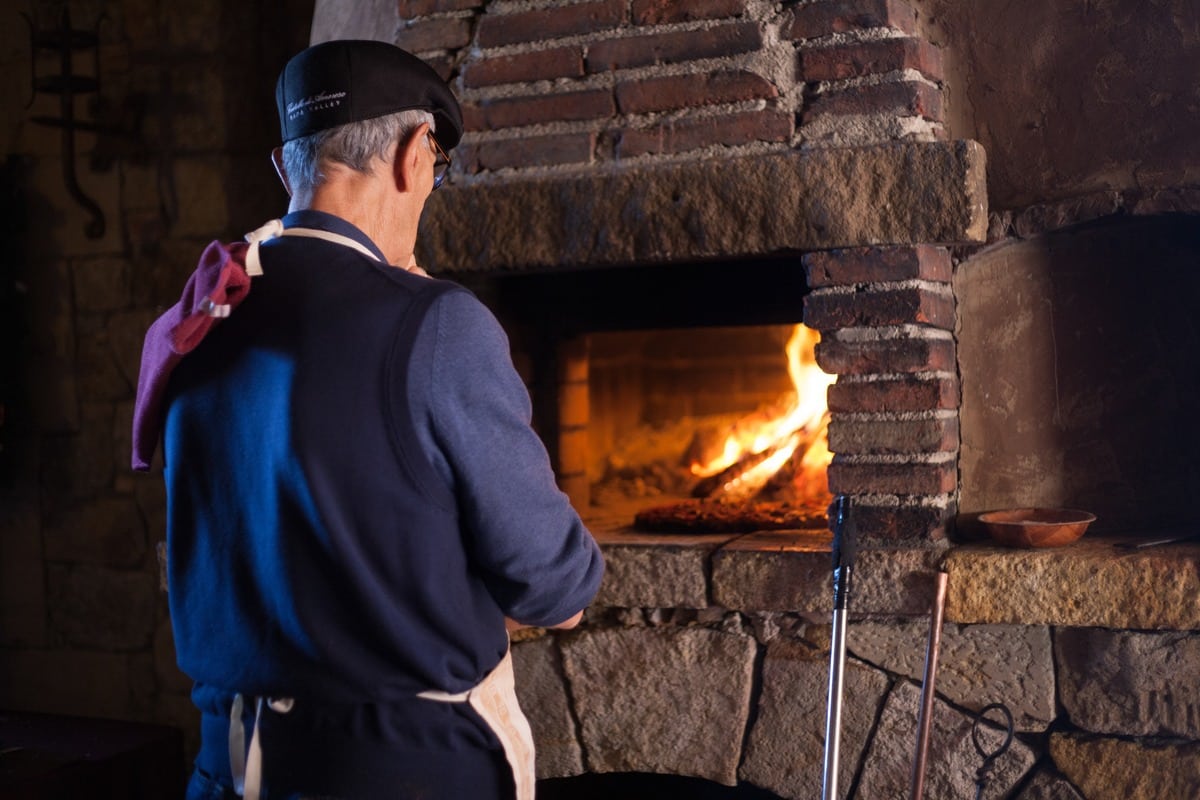
The Best Pizza & Wine Pairings
The inseparable duo of pizza and wine, an exquisite combination that tantalizes the senses and seduces the palate. Optimal wine pairings often align harmoniously with ingredients hailing from the very regions where the grapes themselves have flourished. And when it comes to pizza, the toppings are like a canvas for regional flavors that can truly complement the wine.
Nestled within the walls of our magnificent castle, built-in fire stone ovens are an essential part of our event experience. We pay homage to the modern birthplace of pizza in the southwestern Italian region of Campania, home to the vibrant city of Naples. It is here a story of culinary ingenuity and national pride. Legend has it that on June 11, 1889, the Neapolitan pizza maker Raffaele Esposito crafted a pizza fit for a queen, Margherita of Savoy, to honor her visit. This “Pizza Margherita” was adorned with tomatoes, mozzarella, and basil, representing the colors of the Italian flag. While recent research casts doubt on this legend, the story persists, and the pizza itself has become an icon of Italian cuisine.
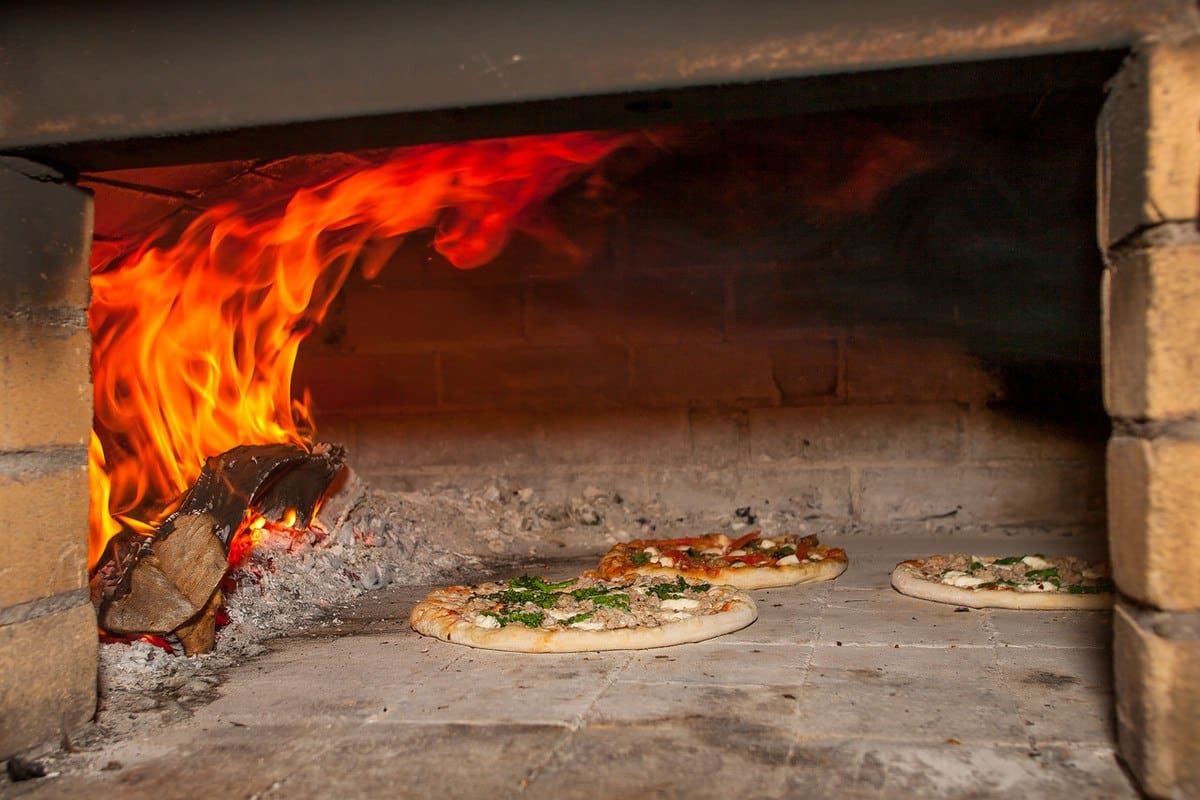
In the world of pizza, and countless variations have emerged to tantalize our taste buds. In Naples, the birthplace of pizza, you can find renowned pizzerias such as Da Michele, Port’Alba, Brandi, Di Matteo, Sorbillo, Trianon, and Umberto, each adhering to even stricter standards than the specified rules. The pizza bases in Naples are soft and pliable, offering a delightful contrast to the thin and crispy Roman style. And let us not forget the “pizza al taglio,” baked in rectangular trays with a wide variety of toppings and sold by weight, offering a whole new world of flavors.
No doubt Pizza has become a global phenomenon, and its popularity has no limits. In fact, an astounding 350 slices are devoured every second, while 40% of Americans indulge in pizza at least once a week. The magic of pizza lies in its universal appeal, a taste that transcends borders and cultures. It traveled across the Atlantic with the wave of Italian immigrants who made up a significant portion of the influx of people to the United States between 1880 and 1920. They brought with them not only their dreams but also their culinary traditions. Today, pizza reigns supreme as one of the most popular foods in the world, with approximately 5 billion pizzas consumed each year.
Finding the perfect pairing can be a delightful challenge. With its myriad of styles, flavors, and qualities, pizza provides endless choices. At Castello di Amorosa we have curated an extraordinary Wine & Pizza guide that will transport you to new heights of culinary bliss. We’ve sought inspiration from the Italian masters themselves, crafting pairings that will make your taste buds dance with joy.
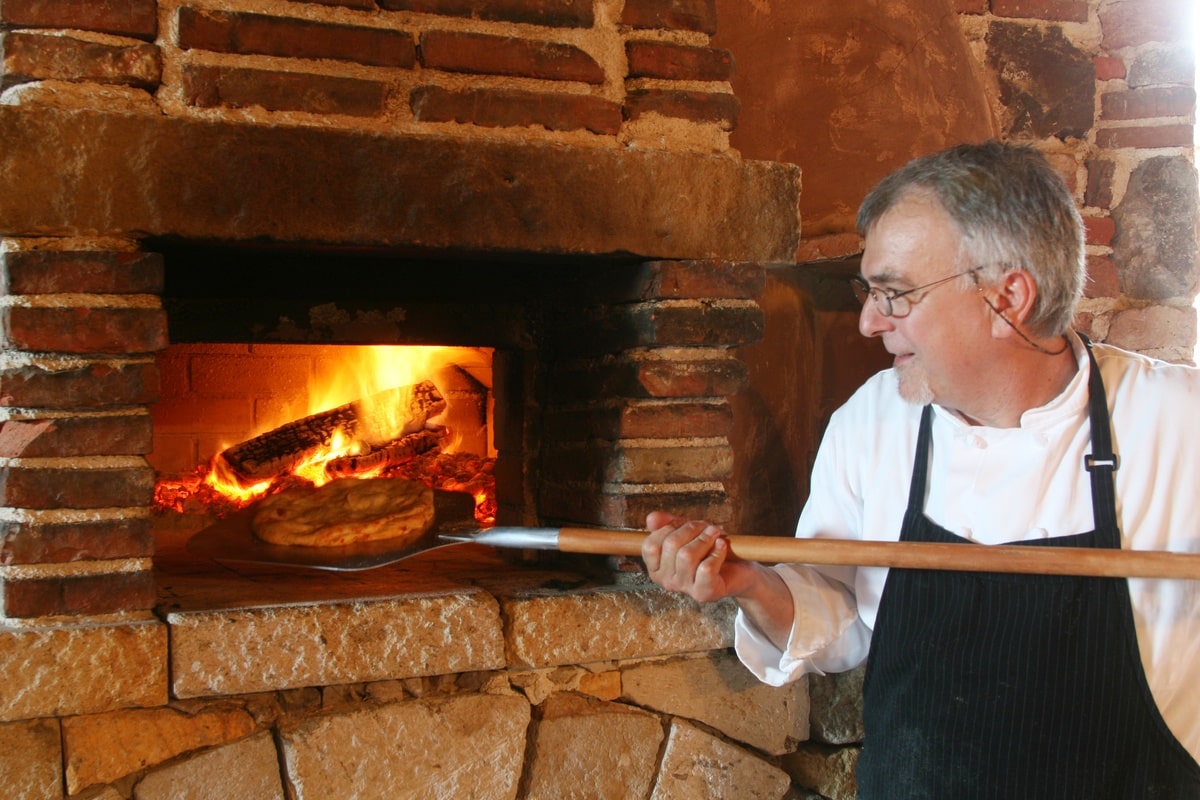
Barbera The Pizza Wine
When it comes to pairing wine with pizza, one versatile option stand out: Barbera. This medium-bodied, fruity Italian varietal complements the flavors of pizza, especially those with herbal and tomato elements. Its smooth, easy-drinking nature and moderate tannins make it an excellent companion for the savory richness of pizza, particularly when topped with salty meats like prosciutto or pepperoni.
What makes Barbera special is its ability to bridge the gap between different wine preferences. It strikes a balance between light and heavy red wines, making it an ideal choice for a diverse group of wine enthusiasts. For the perfect wine and pizza pairing, consider the key elements of the pizza itself: the thickness of the crust, the charcoaling, the type of sauce (whether delicate, hearty, or something different like pesto), the cheese (mozzarella, burrata, or goat cheese), and the meat toppings (prosciutto, pepperoni, or sausage).
Barbera shines particularly bright because its high acidity complements the acidity of tomato-based sauces, creating a harmonious pairing. They offer good acidity, low tannins, and a fruit-forward profile that embraces the flavors of pizza rather than overpowering them.
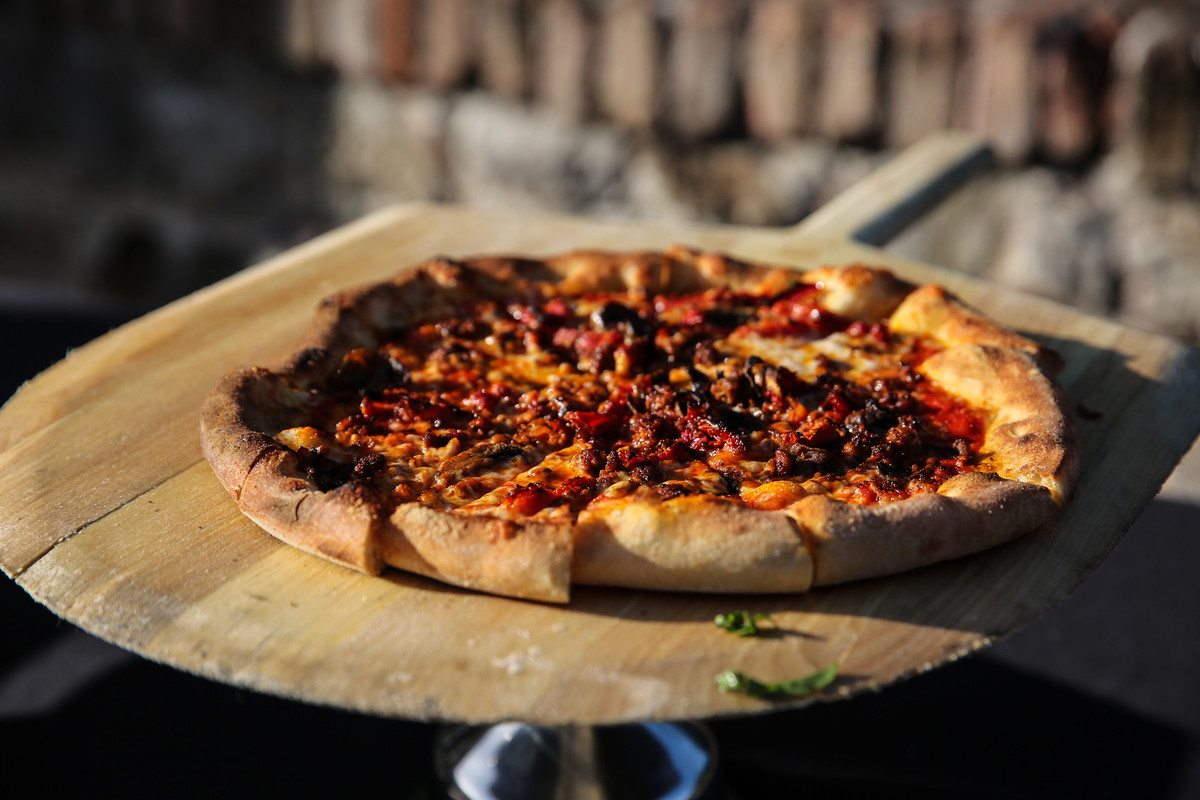
Classic Tomato Pizza & Wine Pairings
These classic Pizza & Wine pairings, lend a helping hand to help balance tomato sauce based pizza.
- Barbera with Classic Pepperoni: Barbera is a red wine known for its high acidity and fruity flavors. Classic pepperoni pizza, with its slightly spicy and savory pepperoni toppings, pairs well with Barbera. The wine’s acidity cuts through the richness of the pepperoni and complements its flavors, enhancing the overall enjoyment of the meal.
- Sangiovese with Italian Sausage and/or Pepperoni: Sangiovese is a red wine with medium to high acidity. The acidity helps cut through the richness of Italian sausage and pepperoni, which can be fatty and savory. The acidity in Sangiovese refreshes the palate and balances the flavors, making it a great pairing. It pairs exceptionally well with herbal and tomato flavors, making it an ideal match for pizza.
- Chardonnay with Quattro Formaggio: Chardonnay is a full-bodied white wine with a rich and buttery profile. Quattro Formaggio (Four Cheese) pizza usually features a combination of creamy and flavorful cheeses. The richness of the Chardonnay complements the creamy cheeses and enhances their flavors, creating a harmonious pairing.
- Vermentino or Dry Gewürztraminer with Canadian Bacon, Pineapple, and Jalapeño: Vermentino and Dry Gewürztraminer are both white wines with vibrant acidity. The combination of Canadian bacon, pineapple, and jalapeño on a pizza creates a balance of sweet, salty, and spicy flavors. The acidity in Vermentino or Dry Gewürztraminer helps refresh the palate and enhances the contrasting flavors, making it an enjoyable pairing.
- Gioia Rosé with Margherita Pizza: Rosé is a versatile wine that can pair well with a variety of dishes. Margherita pizza typically features simple and fresh flavors, including tomatoes, basil, and mozzarella. The light and fruity characteristics of a Rosé complement the lightness of the pizza and its tomato-based sauce, creating a refreshing and harmonious pairing.
- Gioia Rosé with BBQ Chicken Pizza: Its refreshing nature acts as a palate cleanser, balancing the savory elements. Versatile and adaptable, Gioia enhances the overall balance and depth of flavors in BBQ chicken pizza, creating a delightful and well-rounded pairing experience.
- Pinot Noir with Mushroom Pizza: The earthy, nuanced flavors of a mushroom pizza find their match in a well-balanced Pinot Noir. The fruity notes of the wine harmonize with the earthy mushrooms, while the bright acidity cuts through any richness, providing a delightful pairing.

White Pizza & Wine Pairings
These Pizza pairings contain white sauces, like Alfredo, Garlic and more.
- Pinot Bianco or Pinot Grigio with Chicken, Spinach, and Mushroom with Alfredo Sauce: Bianco or Pinot Grigio are typically light-bodied white wines with crisp acidity. They pair well with dishes that have creamy and rich sauces, such as Alfredo sauce. The wine’s acidity cuts through the richness of the sauce, while its lighter body complements the flavors of chicken, spinach, and mushroom without overpowering them.
- Simpatica Riesling with Thai Chicken Pizza: The off-dry sweetness and vibrant acidity of Riesling balance the spiciness of a Thai chicken pizza, creating a harmonious fusion of flavors.
- Spumante Brut with Prosciutto and Arugula Pizza: The crisp and effervescent Spumante cuts through the richness of prosciutto and pairs beautifully with the peppery arugula, adding a refreshing touch.
- Spumante Rosé with Spinach and Feta Pizza: The vibrant acidity and delicate bubbles of Spumante Rosé enhance the flavors of spinach and feta cheese, creating a refreshing and tangy pairing.
- Il Passito – Late Harvest Sauvignon Blanc with Pear Gorgonzola Pizza: The luscious sweetness and honeyed notes of Late Harvest Sauvignon Blanc complement the combination of ripe pears and creamy Gorgonzola on a pizza.
- Cabernet Sauvignon with Sirloin Steak and Gorgonzola with White Sauce: Cabernet Sauvignon is a bold and full-bodied red wine with high tannins. The richness and intensity of the wine make it an excellent match for the robust flavors of sirloin steak. The tannins in Cabernet Sauvignon also help cut through the richness of the steak and pair well with the tangy and pungent flavors of Gorgonzola cheese.
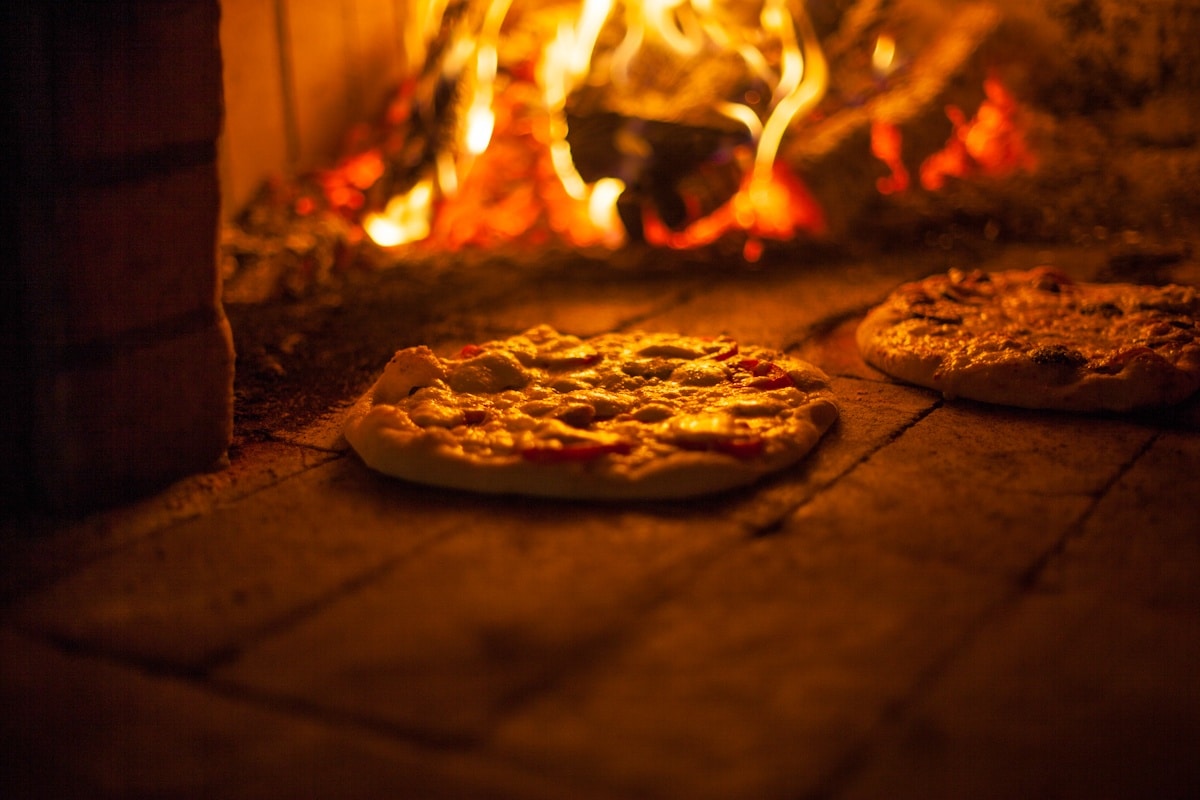
Oakville Collection

On Hallowed Ground
Finesse and attention to detail align to make the Oakville AVA truly special. History and mystique form the backbone of this famed growing region. A unique combination of soil, topography and climate join together here, creating an environment that makes Oakville a viticultural treasure. Napa Valley Oakville wineries are pure and transparent, sculpting the essence and adding subtle nuances to express each unique site.
A History of Excellence
In the heart of Napa Valley, California lies the town of Oakville. Once a steam train stop in the late 1800s, Oakville owes its name to the dense groves of native oak which once covered the area. Today, the Oakville name is synonymous with excellence in winemaking. H. W. Crabb planted the first vineyard here in 1868, 240 acres of land close to the Napa River that he named To Kalon. By 1877, Crabb was producing 50,000 gallons of wine per year.
In 1903, the United States Department of Agriculture established an experimental vineyard station in Oakville. Known as “Oakville Station”, the vineyard has been operated by the University of California at Davis for more than 50 years. The department has conducted critical viticulture research here, including trials of clones, rootstocks, vine spacing, pruning levels, irrigation and more.
The Oakville AVA is 5,700 acres in total and one of the largest vineyard areas in Napa Valley with 5,000 of those acres planted. Oakville’s soils are primarily gravelly and sandy, but a small portion is a mix of clay and sandy loam. It wasn’t until 1993 that the Oakville AVA was officially declared a sub-appellation of Napa Valley.
Oakville AVA: Cult Status
Oakville AVA’s status as a world-class grape-growing region is solidified in part because of the number of great Napa Valley wineries that call the region home. Known for its pricey cult wines, the excellent publicity of Oakville’s wines can partly be attributed to the unique quality of its soils and climate. This collection of family-owned vineyards is often tended to by meticulous growers.
Producers here focus on cultivating limited parcels of Cabernet Sauvignon and Merlot and smaller parcels of Petit Verdot, Cabernet Franc, Zinfandel, Sauvignon Blanc, and Chardonnay. Bordeaux-style blends are especially popular here and some critics even compare these wines to some of the finest Old-World Bordeaux labels. Critics claim these Oakville wines strike a perfect balance between lively acidity and sweet fruit. Unlike many other bold red wines produced in the Napa Valley, which tend to taste quite jammy and fruit-forward, Oakville wines are thought to be more complex and earthy. These age-worthy Cabernet routinely exhibit aromas that range from boysenberry, ripe blackberry, and blueberries, with hints of spice, tobacco leaf, and leather. When it comes to growing Cabernet Sauvignon, the region is just right. This helps the Oakville to perfectly express the essential qualities of Cabernet Sauvignon in deep, complex wines that last for decades.
Old World Heart & New World Style
During the growing season, temperatures in the low-to-mid 90s are common. Nights cool down dramatically, preserving acidity in the grapes. Cool marine fog can linger until late morning, chilling the fruit and protecting it from the morning sun.
Annual rainfall is about the same as Bordeaux, around 35 inches per year. In contrast to Bordeaux, Oakville gets most of the rain in winter. The climate and soils of Oakville allow Cabernet Sauvignon to reach perfect ripeness every year. Known for its bedrock soil, the result of sedimentary deposits from the hills that form Napa Valley. The soil is gravelly, with exceptionally good drainage. Wind and fog arriving from San Pablo Bay affect the morning and evening hours, but their effects are limited by the intervening Yountville Mountains. The western edge features the famous gravelly alluvial fans that include Martha’s Vineyard and to Kalon.
Oakville’s soils can vary considerably. In the east hills the soils are made up of rust red, volcanic rock and iron, mixed into the gravel and loam. A smaller portion of the AVA is a mix of clay and well-drained sandy loam.
Oakville AVA Comes To The Castle
We are pleased to announce the two newest additions to the Castle family. Our 2018 Oakville, Cabernet Sauvignon & our 2018 Oakville, Red Blend both produced in the world-famous growing region.
2018 OAKVILLE
Cabernet Sauvignon
Napa Valley
This limited production Cabernet Sauvignon comes from the fabled growing region of Oakville. Located in central Napa Valley, Oakville has been noted for its ability to produce award winning cult wines. The wine exhibits hints of opulent dark cherries, blackberry, spice box and espresso bean. Backed by silky tannins and a great mouthfeel. Give the wine time to develop and you will be rewarded with additional layers of complexity.
2018 OAKVILLE
Red Blend
Napa Valley
This Bordeaux style blend is open and approachable with soft textures. Layers of dark red fruits, licorice, black currant, anise and vanilla are present in the blend. This limited production wine hails from the Oakville AVA, one of the most respected growing regions in the world.
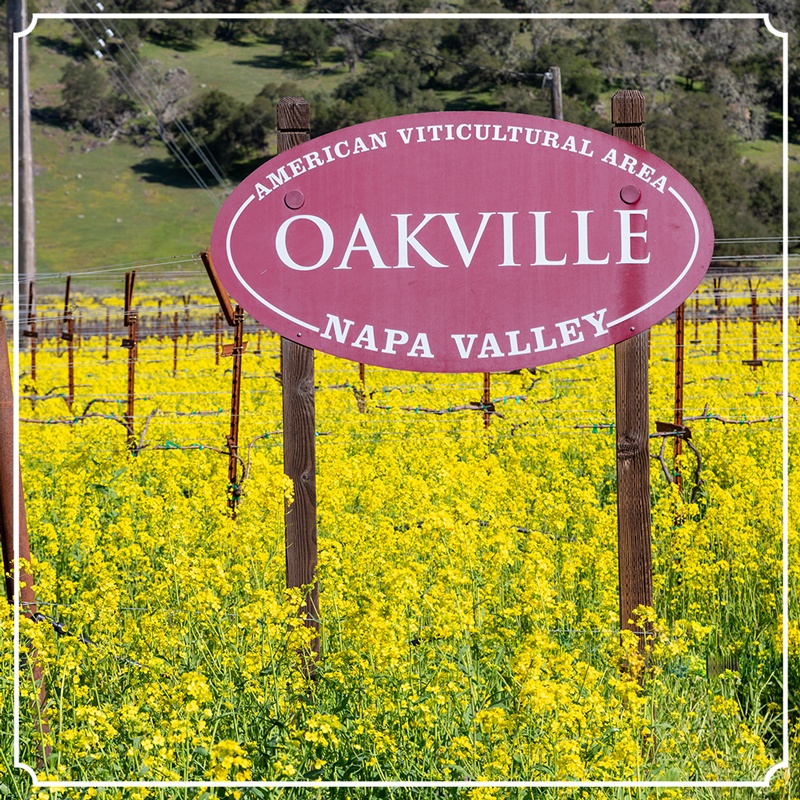
Patrick Creek Historic Lodge

Patrick Creek Historic Lodge
Nestled in the Six Rivers National Forest in Northern California, your relaxing weekend get-a-way awaits! Come stay at the Patrick Creek Historic Lodge, located minutes from the Oregon/California border on Highway 199 in Gasquet, California. Just a short drive from the Pacific Ocean, you’ll find yourself pampered by gourmet cooking, mystified by enormous Redwoods, and thrilled by the trout, salmon and steelhead fishing accessible immediately outside the Lodge doors. Located less than 100 feet away from two rivers, Patrick Creek & Smith River.
Scenic drives, fishing, hiking, biking, kayaking, swimming, relaxing, reading, nature watching, animals, fine dining and good times. Guests can enjoy rafting & kayaking, biking, swimming, fishing, hiking on the many trails, wildlife viewing, wilderness, giant Redwoods, scenic drives or relaxing in this beautiful wonderland. The tallest Redwood in the world was recently discovered only few miles away from the lodge.
Fish Salmon & Steelhead in the famous Smith River, available throughout the fall and winter. Cutthroat trout fishing is available throughout summer! The Smith River is the last wild river in California and the fifth cleanest river in the world. Its breathtaking crystal green color provides one of the best kayaking & rafting rivers in California! It offers thrills for everyone – from novice to expert. Swimming opportunities abound. Ocean fishing is only 25 miles to the west in Crescent City.
The first lodge was built in the late 1800’s and called Patrick Creek Stage Station. The present lodge was built in 1926 and became a popular stopping place for travelers. Regular patrons come from Crescent City and southern Oregon and all over the U.S. to enjoy the area. Patrick Creek Lodge serves a wonderful Sunday brunch, boasts a huge stone fireplace and log beams. It offers private cabins and caters outdoor weddings and receptions.
San Francisco to the lodge is six hours along the spectacular Hwy. 101. Portland is five hours away. Only a day trip from Reno, Yakima or Boise. Come experience Patrick Creek Historic Lodge and have a fabulous time along the way.
Snow Day

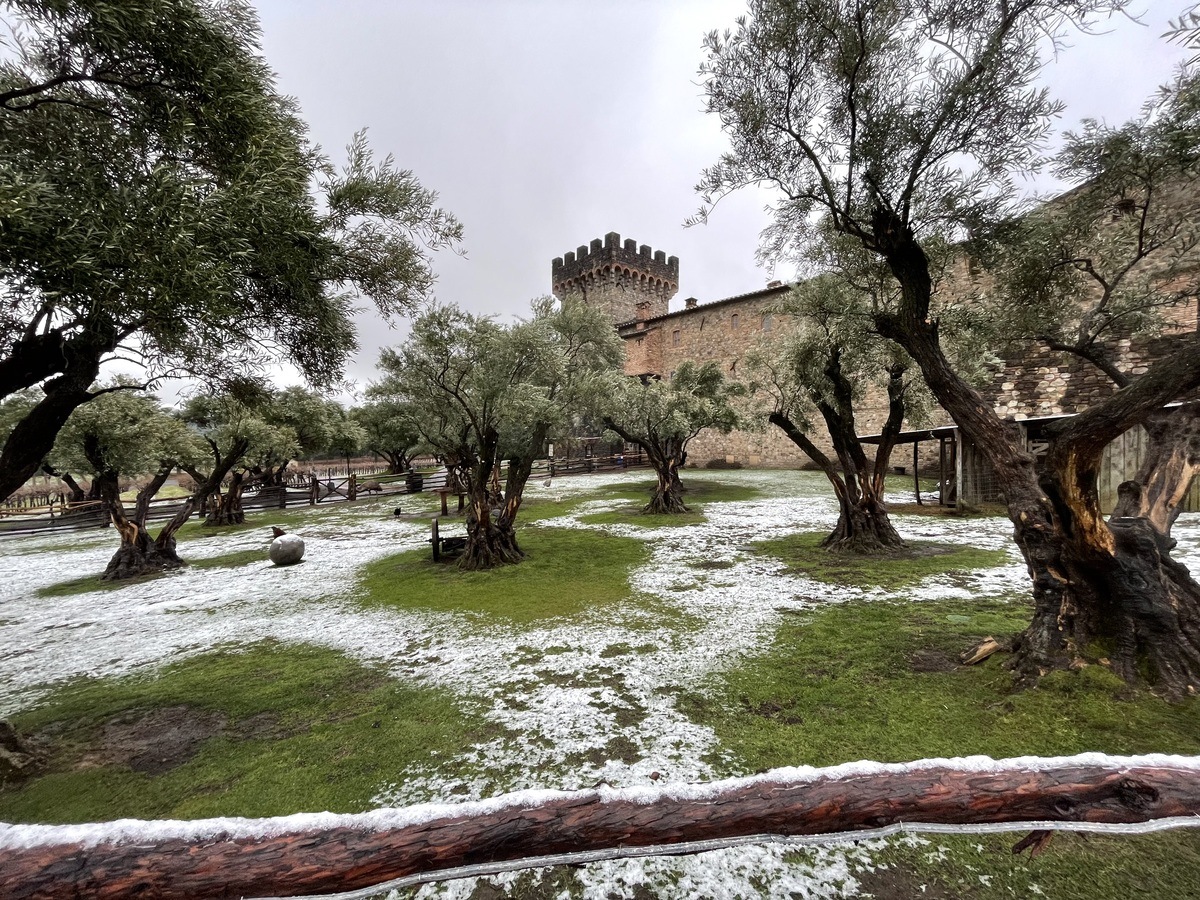
Snow Day!
A rare snowstorm hit Napa County early Friday morning! The occurrence marks only the second time it snowed at the Castle since opening in 2007. The snow made for a marvelous winter scene in the early morning hours.
Besides our animals staying in their pens for a bit longer in the morning, not much was effected at The Castle. At this time of year, snow poses no risk to our grapevines. Vines are dormant in their annual hibernation between fall’s harvest and the bud break in spring. During this time, the snow is just another form of water to the grapevine.
Napa Valley’s average elevation is just a few hundred feet above sea level, making the snow that much more of a rarity. Some wineries located in the higher elevations got up to a foot of snow. A drive through Wine Country looked more like a trip through Tahoe than wine country.
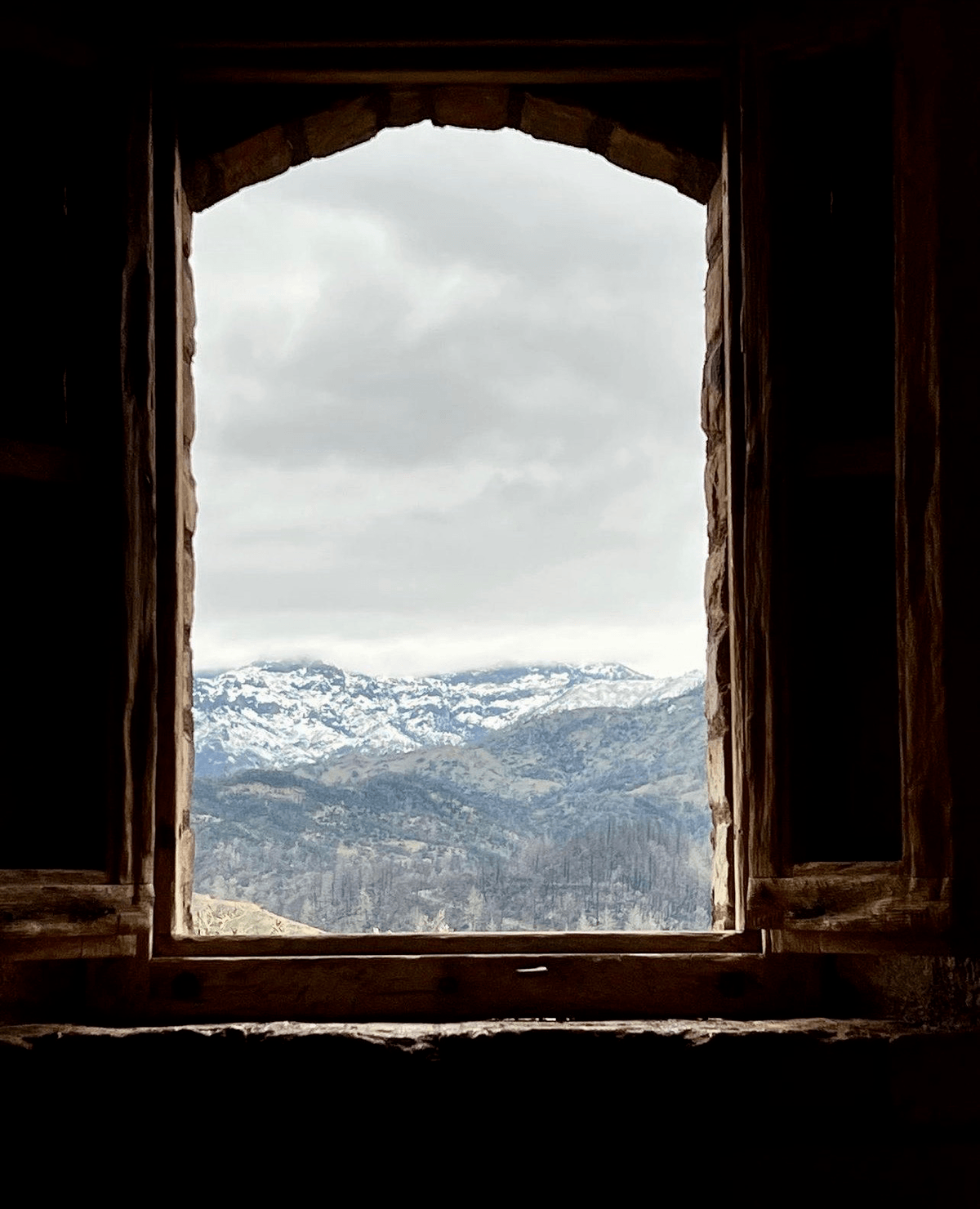
Freezing Temperatures
While there were record low temperatures posted across California. The storm caused both power outages, fallen trees, downed power lines and road closures across Napa Valley. A low temperature of 27 degrees was reached on Thursday the 23rd, turning the Napa Valley into a winter wonderland.

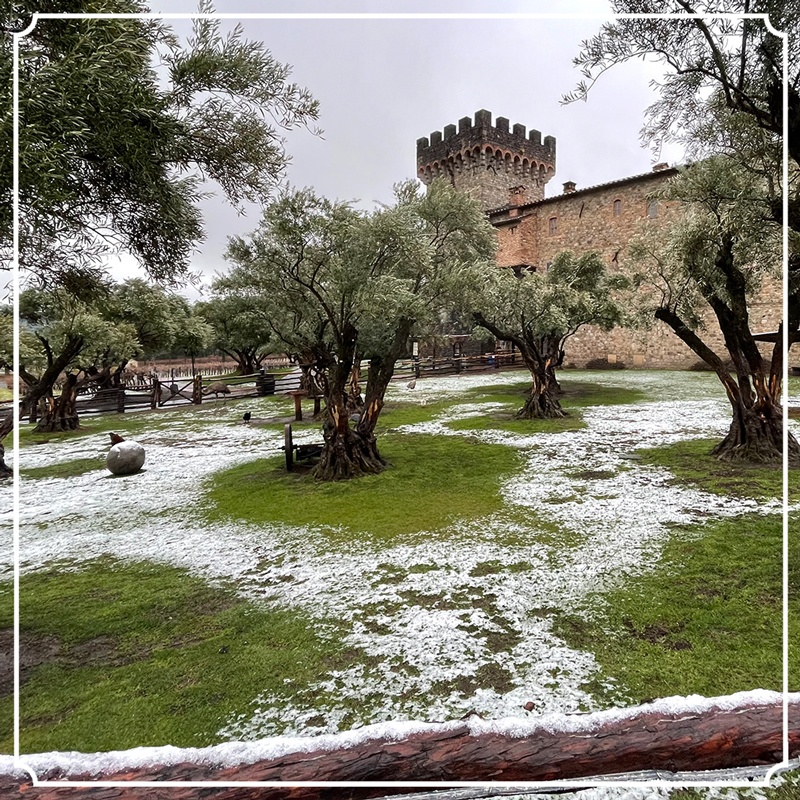
Linguine allo scoglio

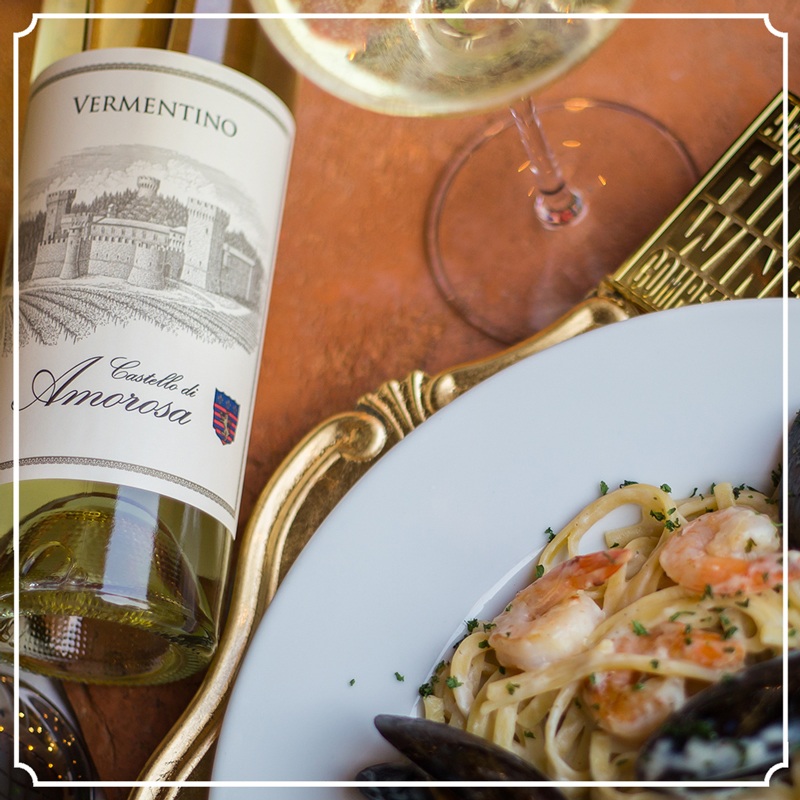
Recipe Date: February 8th, 2023
Difficulty: Easy
Measurements: Imperial (US)
Linguine Allo Scoglio Recipe
From cucineditalia
As the warmer months inch closer on the calendar, a rich seafood dish could be exactly what you’re missing. Look no further than this Italian seafood pasta recipe known as Linguine allo scoglio, linguine pasta cooked al dente in a tomato-based sauce with mussels, clams, and shrimp. The ideal accompaniment to this dish is a medium-bodied soft rosé, such as the Italian Rosato Gioia, a wine capable of balancing out the slight acidity of the tomato sauce. Dry white wines are a wonderful pairing as well. The best white wine with this traditional Italian seafood pasta is our Vermentino from Temecula Valley. A lively and crisp white wine with tropical aromas of white peach, and citrus complemented by a bright acidity and subtle minerality make it the perfect pairing for this seafood dish.
- 350 g (12 oz) of Spaghetti
- 1 kg (2 pound) of Clams with shells
- 1 kg (2 pound) of Mussels with shells
- 300 grams (2/3 pound) of Squid
- 300 g (2/3 pound) of Shrimps
- 200 g (1/2 pound) of ripe Cherry Tomatoes
- 1 Fresh hot chilli pepper
- 2 Cloves of garlic
- 5 Tablespoons of extra virgin olive oil
- 150 ml (1/2 cup ) of dry white wine
- Bunch (1/3 cup) of fresh parsley
- Salt to taste
Directions
1) Rinse clams under running water and then let them soak in plenty of cold water with a handful of coarse salt. The clams should remain in the cold water for at least an hour, preferably two, to purge. Keep this time in mind when you decide to make this recipe. Place the clams in a pan and cook over high heat covered with a lid. Wait for them to open, this will take about 3 minutes.
2) Now strain the clam sauce with a fine strainer but DO NOT throw away their water, keep it aside. Finally shell the clams, keeping some clams with their shells that you will use for the final decoration of the dish.
3)Clean the mussels by scraping off any impurities with the blade of a small knife. Tear off the byssus, that is the bearded part that comes out of the shell. Then, with the help of a stainless steel sponge, clean well their shells. Place the mussels in a pan and cook over high heat, cover with lid. Wait for them to open, this will take about 3 minutes. We prefer to cook clams and mussels separately in case the clams release a lot of sand.
4) Now strain the mussels sauce with a fine strainer. Finally shell the mussels, keeping some of them with their shells: you will use them for the final decoration of the dish.
5) Wash the squid under running water, then remove the entrails, the eyes, the central beak and the internal bone. Finally remove the skin and cut them into rings. Set aside.
6) Clean the shrimps, taking care to remove the dark filament, all the shell and the heads. Set aside. Wash and chop the cherry tomatoes then chop the parsley. Set aside.
7) In a large saucepan, sauté the peeled garlic cloves in the extra virgin olive oil. Add the red hot chili pepper and the squid. Cook for about 2 minutes over medium heat.
8) Then raise the heat and add the white wine. Stir and allow the alcohol to evaporate. Finally add the mussels and clams and lower the heat. Add a ladle of clams water and then the chopped tomatoes. Mix and cook over high heat for about 10 minutes.
9) Finally, add the shrimp and chopped parsley. Cook over medium heat for about 3 minutes (shrimp have very short cooking times). Italian seafood sauce is ready. Remove the garlic cloves and chili pepper (see note below).
10) Now cook the pasta. Bring plenty of salted water to a boil. Cook the spaghetti according to the cooking times described on their packaging. Using a slotted spoon, drain the spaghetti 3 minutes before the end of cooking time.
11) Place them directly in the pan with the seafood sauce. Stir and finish cooking the spaghetti in the pan for another 3 minutes over high heat. This way they will better absorb the flavor of the seafood sauce. Stir well and transfer the best Spaghetti allo Scoglio you have ever eaten to a serving dish. Garnish with the shells kept aside and serve.
Notes
Garlic & Chilli Peppers: We chose to leave the garlic and hot chili pepper whole. This way you can easily remove them from the sauce. If you prefer, though, you can chop them up and leave them in the sauce, depending on your taste.
Pair w/ Our Vermentino, Enjoy and cheers!
Wine Pairing – Vermentino
Cinquecento Cavalieri Winemaker's Dinner

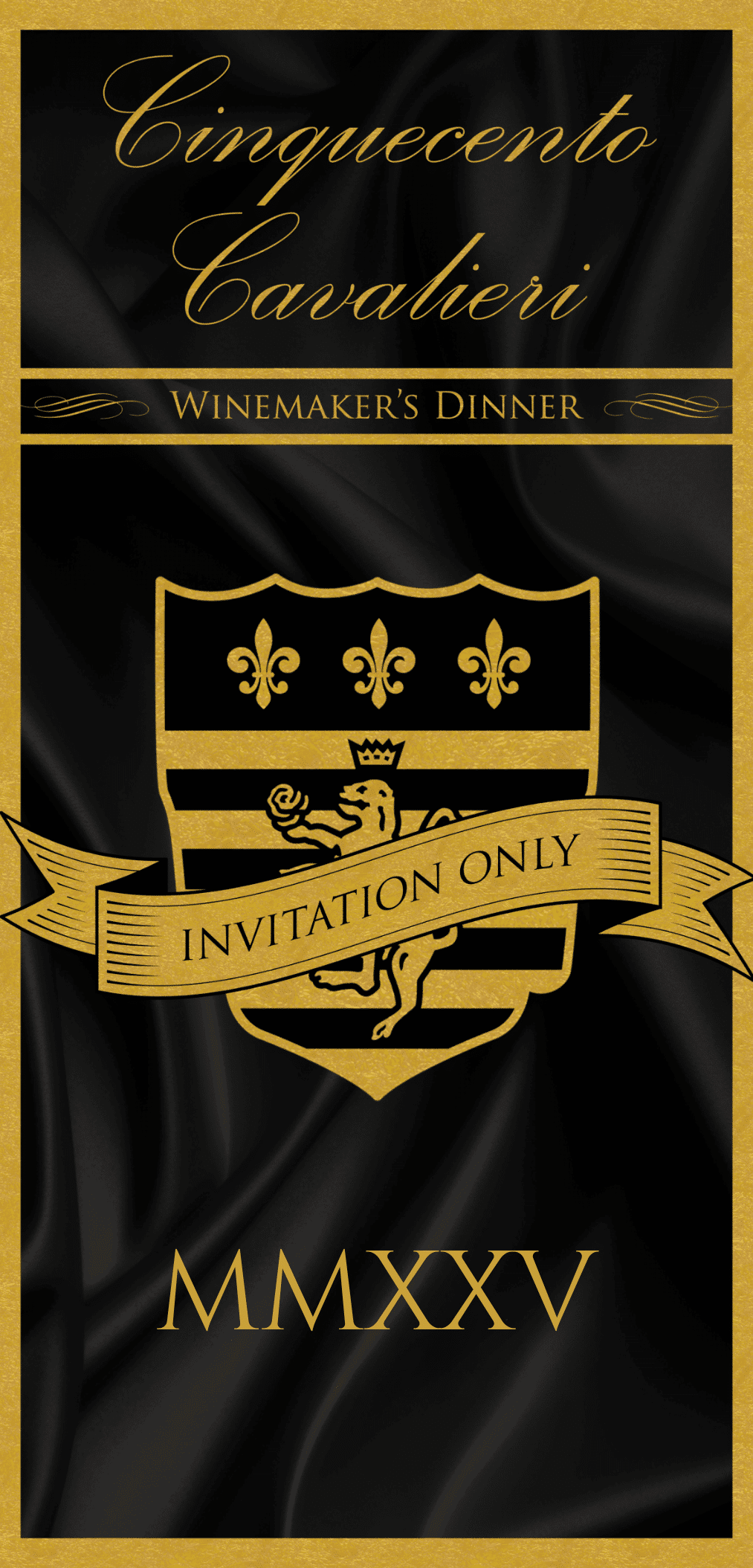
Cinquecento Cavalieri Winemaker’s Dinners
Our Cinquecento Cavalieri Wine Club members are cordially invited to Castello Winemaker’s Dinners! Join our proprietor, Dario Sattui, for an elegant evening at the Castello. Taste current releases and exclusive future wines from the barrel, followed by dinner with wine pairings in our Great Hall. During dinner, enjoy harvest updates and vintage insights.
2025 DATES
Friday, March 21st
Friday, June 13th
Friday, August 22nd
Friday, October 3rd
Friday, November 7th
Wine Reception at 6:30 P.M. Followed by a Seated Dinner
Please note our Cinquecento Cavalieri Winemaker’s Dinners are by invitation only and reservations are required.
To learn more about our Cinquecento Cavalieri Wine Club, click here
Cinquecento Cavalieri Members May Bring Additional Guests for $275 Per Person
*Our menus are pre-set and we can accommodate dietary restrictions and food allergies upon advance request*
Rosato Wine Raspberry Cupcakes

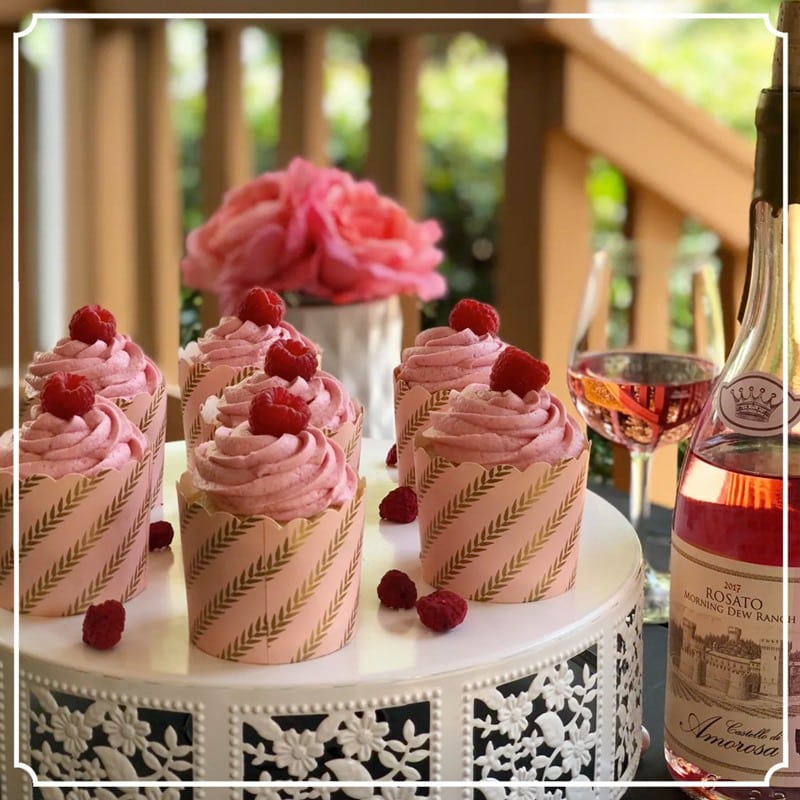
Recipe Date: October 5th, 2022
Difficulty: Easy
Measurements: Imperial (US)
Rosato Wine Raspberry Cupcakes
From Pastry Tales
The amazing and talented Sandra from Pastry Tales has another amazing dessert recipe to share. These homemade raspberry cupcakes feature our reserve Rosato, an ideal dessert match. These elegant raspberry cupcakes are filled with a homemade raspberry filling and topped with a delicious rosé frosting. The ever popular berry and rosé pairing is a formidable duo. This rosé wine cupcake recipe is really easy if you follow all the steps : It has a soft and delicate yellow cake ( you’ll taste rosé and almond), filled with a little bit of a raspberry compote, topped with a rosé and raspberry buttercream frosting.
Yield 12 cupcakes
For the cupcakes:
1/2 cup unsalted butter, at room temperature
1 cup white granulated sugar
2 large eggs, at room temperature
1 large egg yolk, at room temperature
1/2 rosé wine (I used Rosato from Castello Di Amorosa winery)
1/2 teaspoon almond extract
1 1/2 cups all-purpose flour, sifted
2 teaspoons baking powder
1/4 teaspoon salt
For the filling:
1 1/2 cups fresh/frozen raspberries
1/3 cup white granulated sugar (you can add more if you want to)
1 tablespoon of cornstarch
1 1/2 tablespoon of fresh lemon juice
For the frosting:
1 cup rosé wine (I used Rosato from Castello Di Amorosa winery)
1 cup fresh / frozen raspberries
4 cups powdered sugar, sifted
1 cup unsalted butter, at room temperature
pinch of salt
To garnish:
Fresh raspberries
Directions:
For the cupcakes:
1.- Preheat oven to 35o F. Line muffin pan with liners. (I found super cute ones at Home Goods)
2.- In a bowl, mix together flour, baking powder and salt. Set aside.
3.- In a bowl of a stand mixer fitted with paddle attachment, beat butter for about 2 minutes until fluffy, add sugar and mix together on medium high speed until light and creamy, about 4 minutes.
4.- Add the eggs and egg yolk, mixing well after each addition. Add rosé wine and almond extract. By now, you’ll see that the mixture has curdled, but don’t know it will come together again.
5.- Add the flour in 2 batches and beat in low until smooth (do not overmix).
6.- Fill the cupcake liners only 2/3 full. Bake for about 18-20 minutes when the tops start to turn golden or until a toothpick is inserted into the center of the cupcake comes out clean. Let cool for 5 minutes and then remove the cupcakes to the rack to cool completely.
For the filling:
1.-In a small sauce pan, combine all the ingredients and slowly bring to a boil over medium-high heat (keep stirring until thickened for best results).
2.-Let cool completely before filling the cupcakes.
3.- Hold a baked and cooled cupcake in one hand and insert a small paring knife, at an angle, about half way down into the cupcake. Cut out a cone shaped piece out of the center of each cupcake. Fill each with a spoonful of the raspberry compote.
For the frosting:
1.- Combine raspberries and rosé wine in a small saucepan over medium heat. Bring to boil and then simmer until reduced to about 1/4 cup. It will take about 30 minutes so please be patient otherwise you’ll add too much liquid to your frosting.
2.- Pass through a mesh strainer to remove seeds and let cool completely in the fridge.
3.- In a bowl of a stand mixer fitted with paddle attachment, beat butter for about 2 minutes until creamy, add the powdered sugar, salt and reduced raspberry rose sauce until combine. Increase to high and beat until smooth and creamy, about 3 minutes.
4.- Frost the cupcakes. I used Wilton 1 M tip. Decorate with fresh raspberries.
Grab a cupcake and a glass of rosé wine. Enjoy!! Cheers!

Related Products – Rosato
